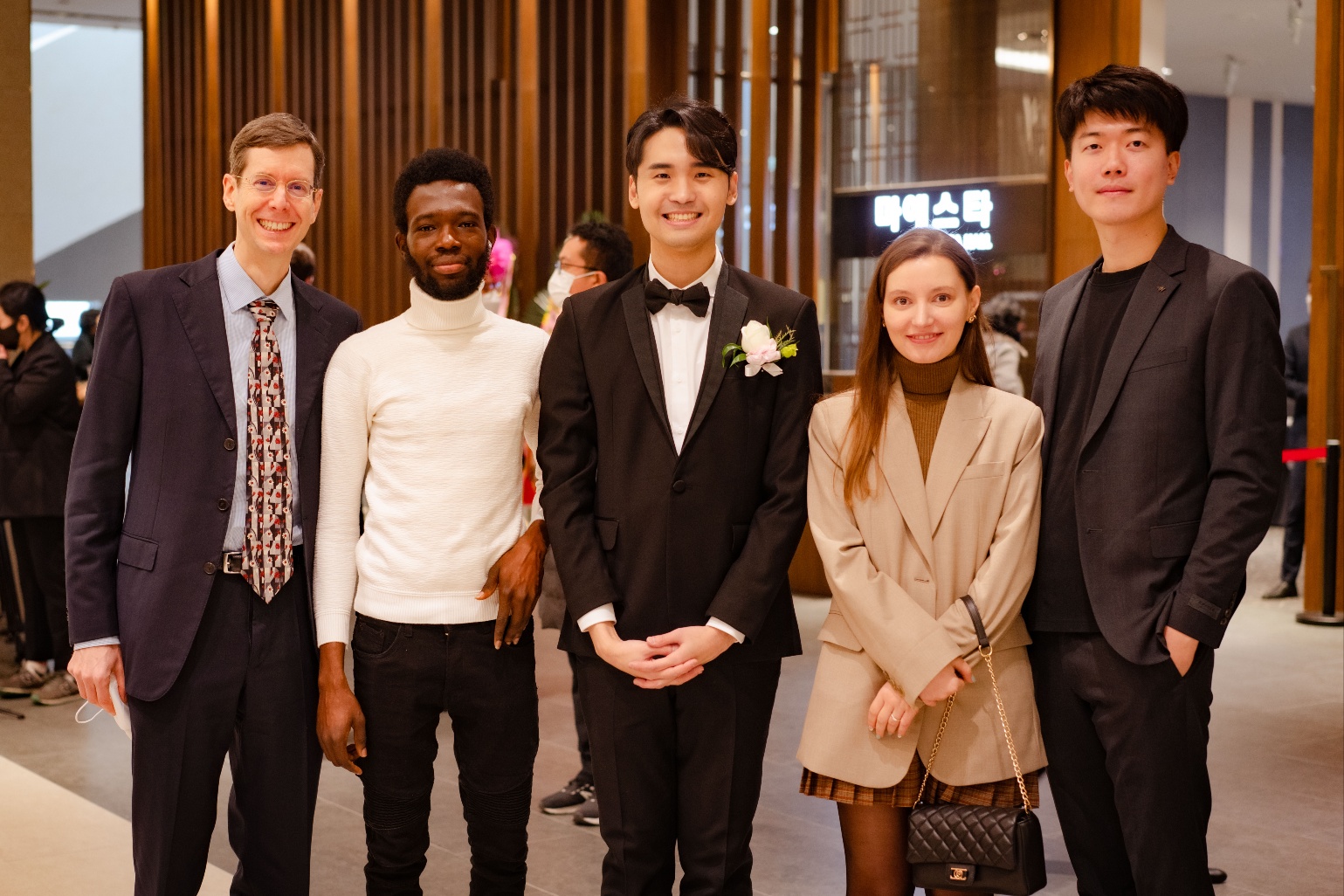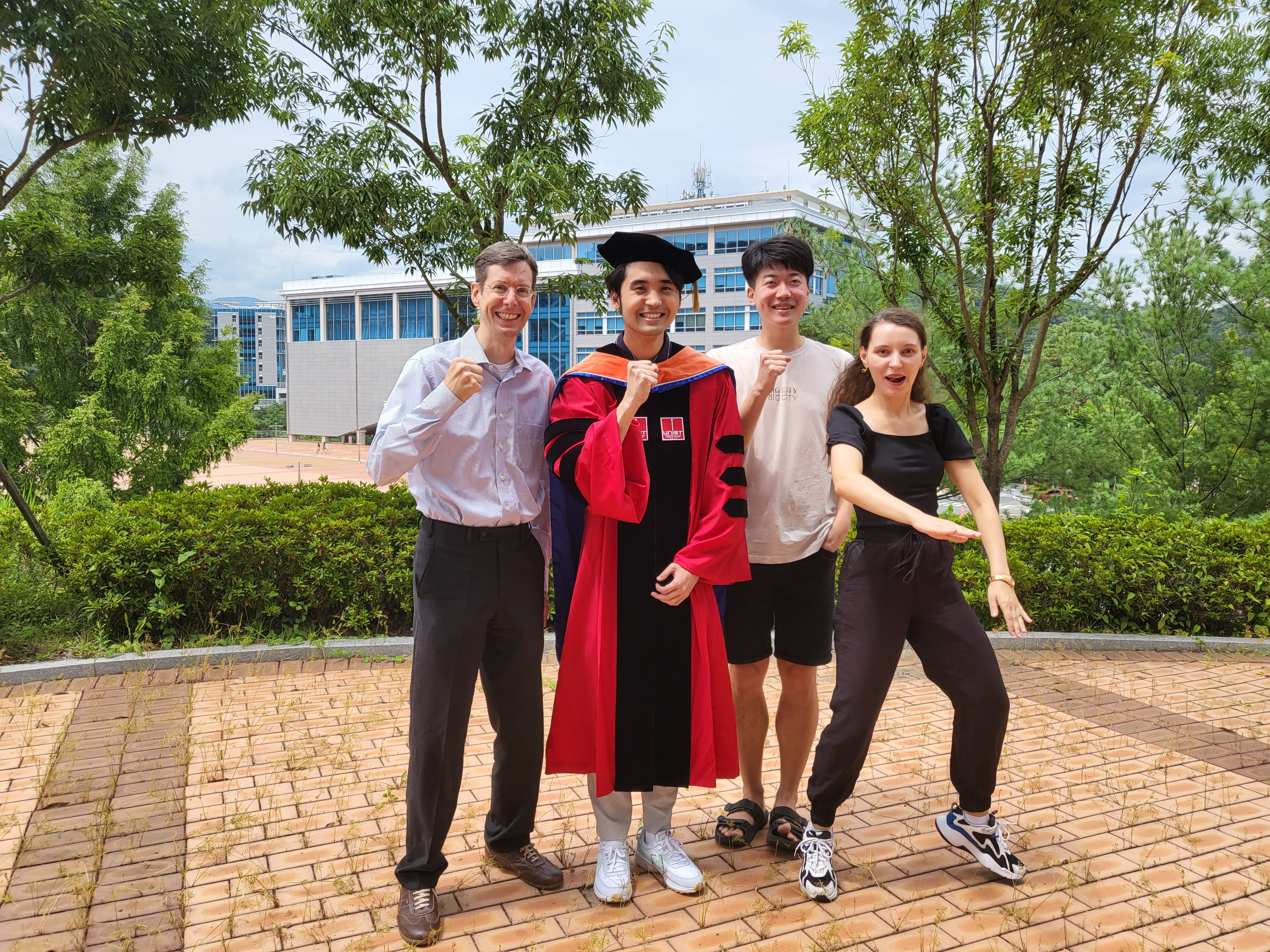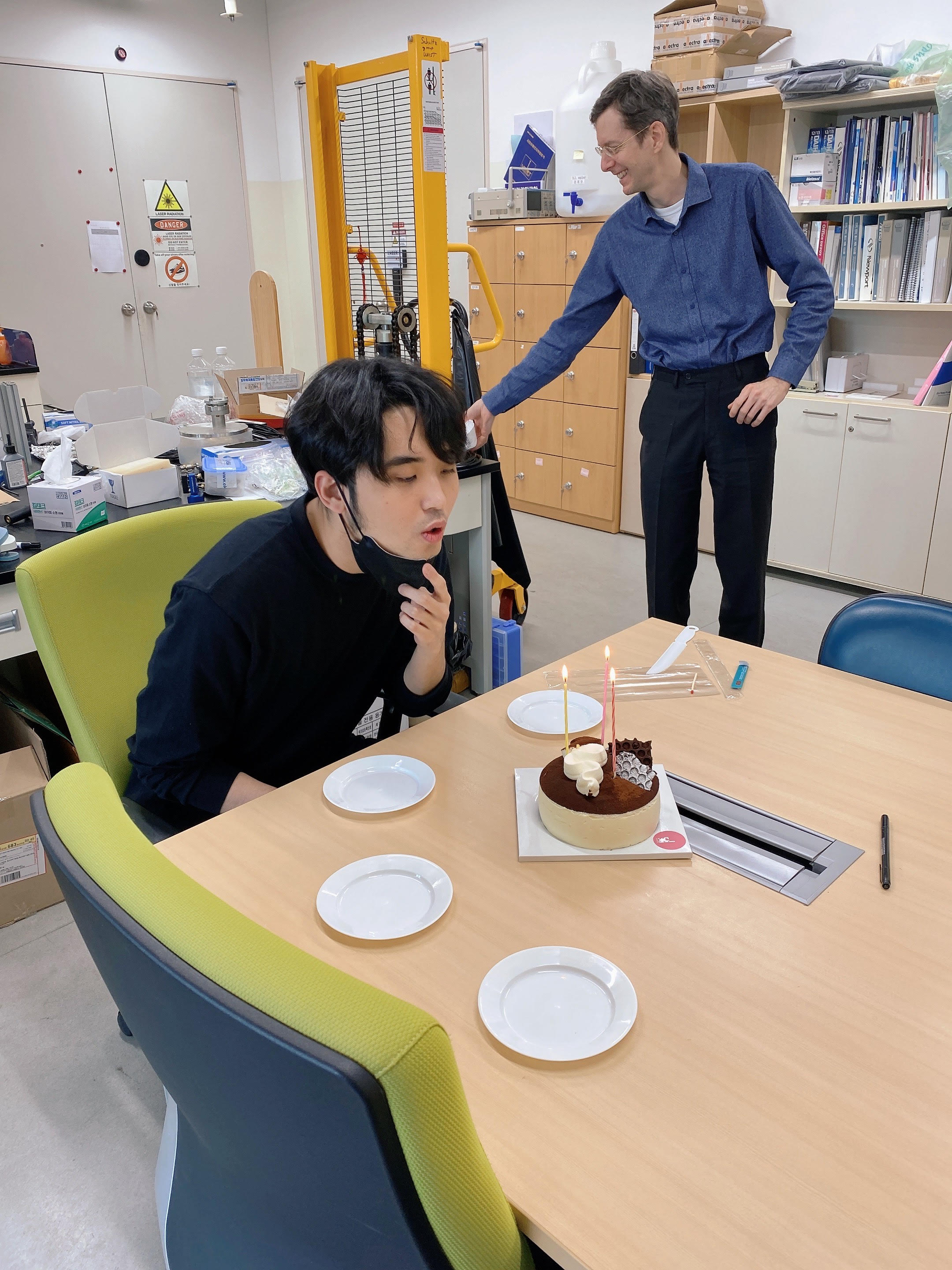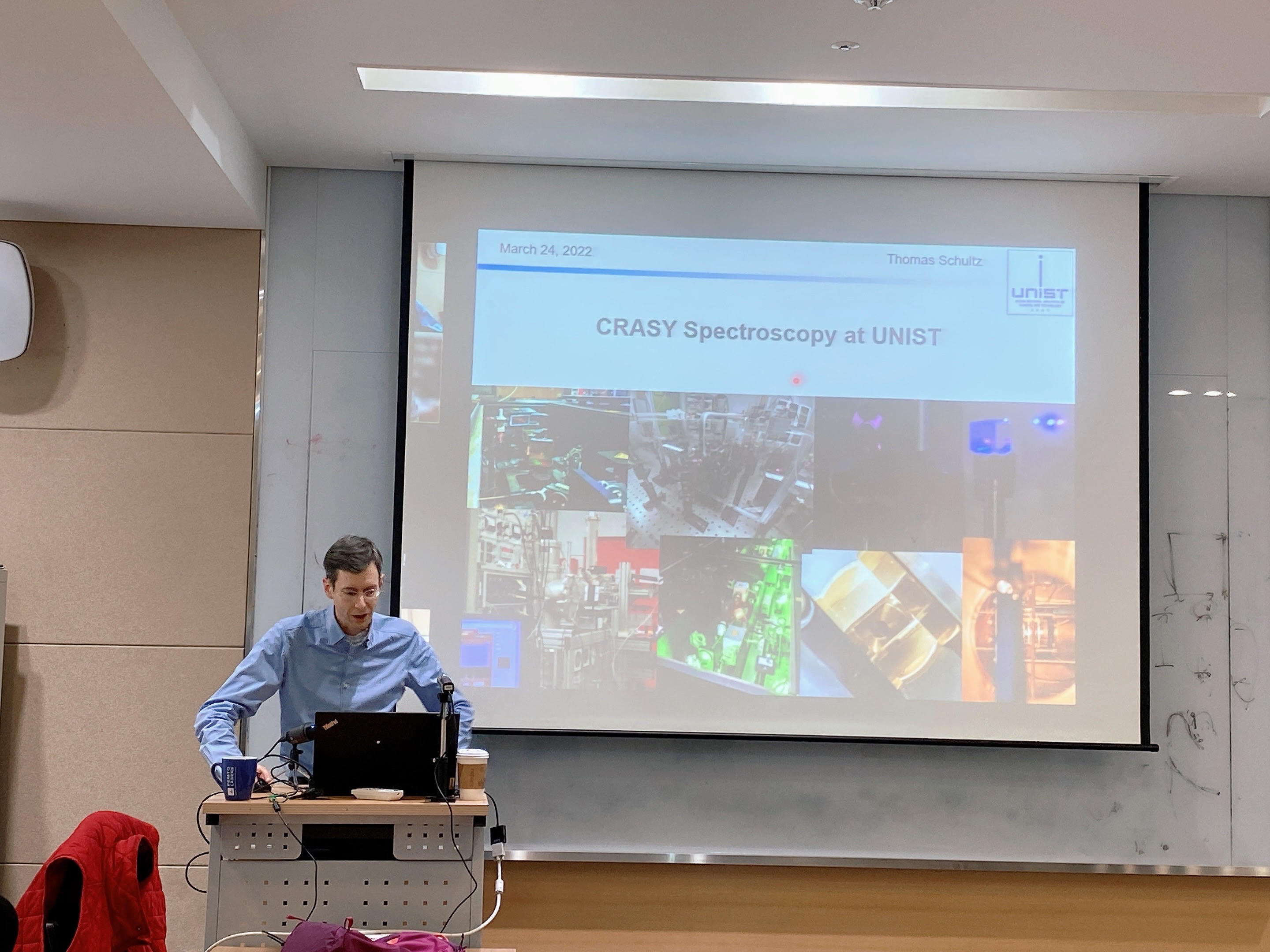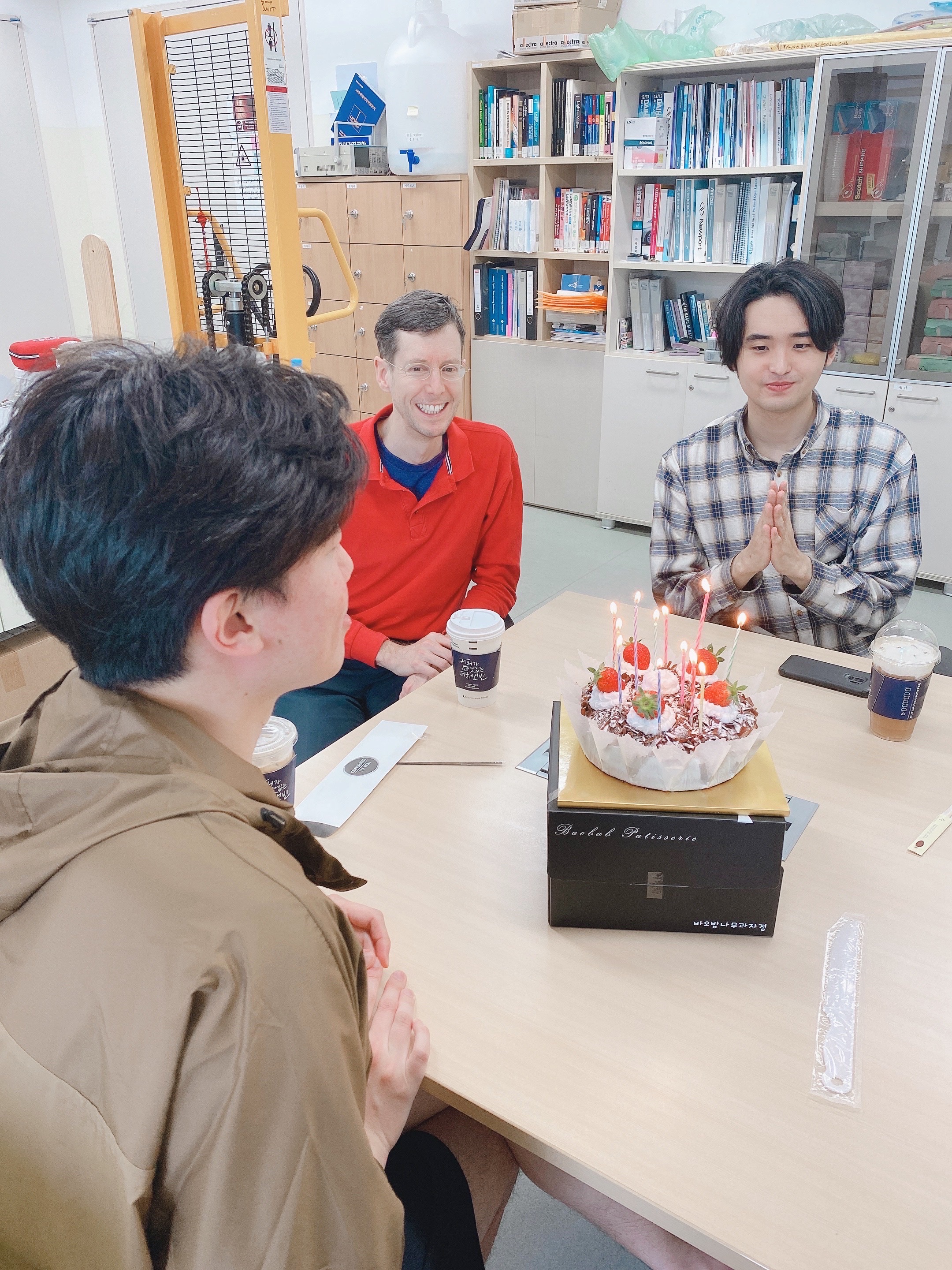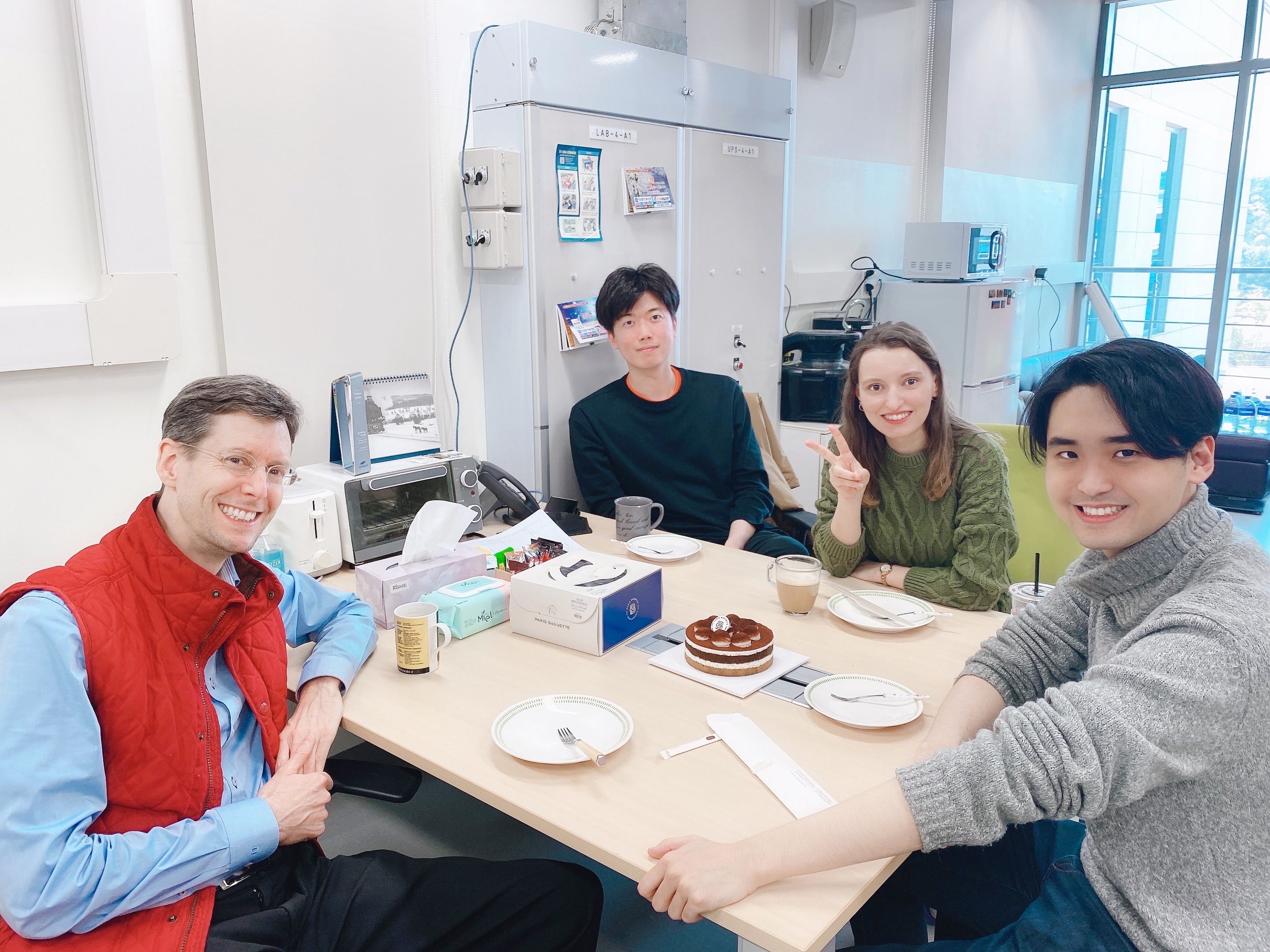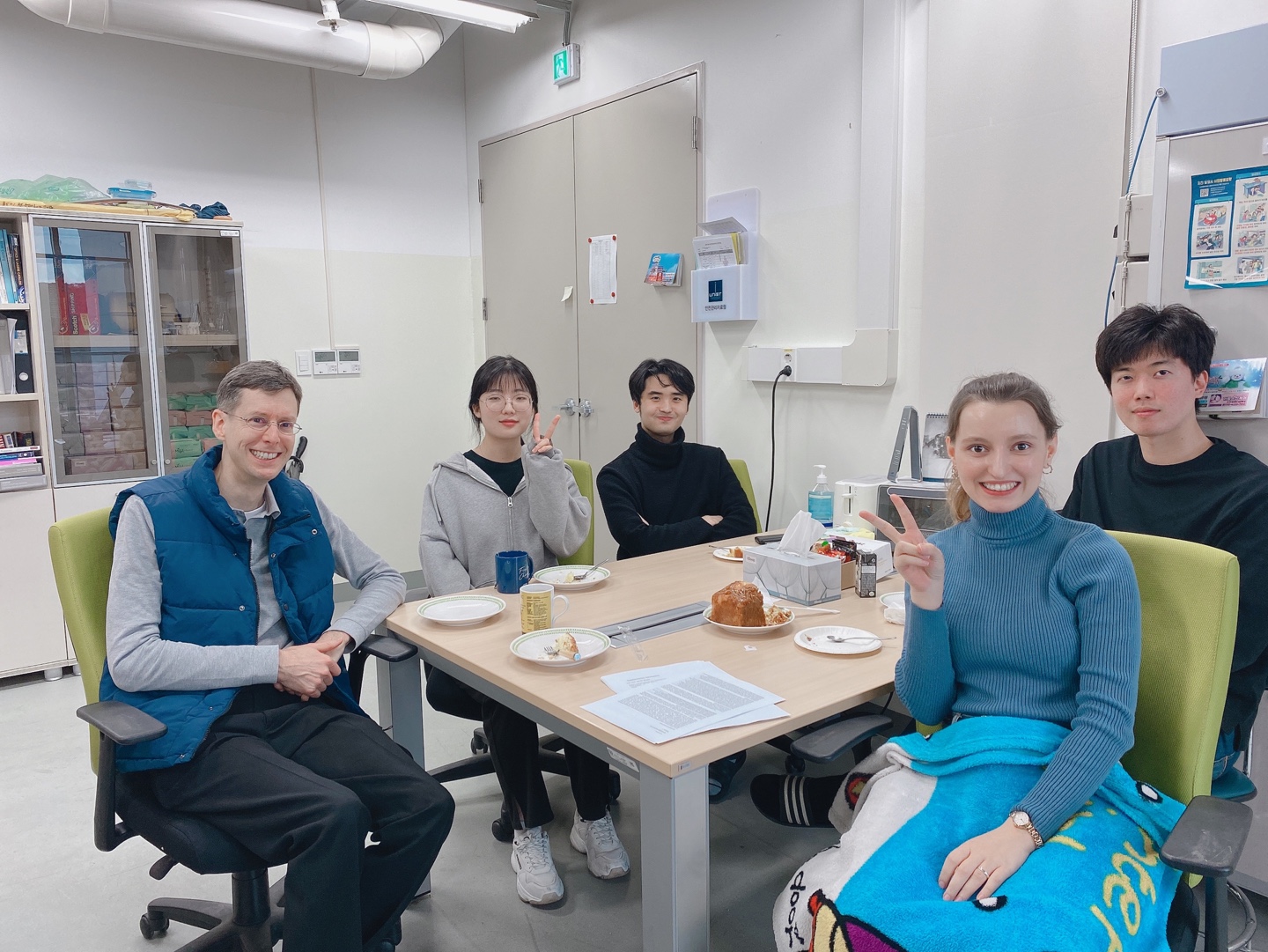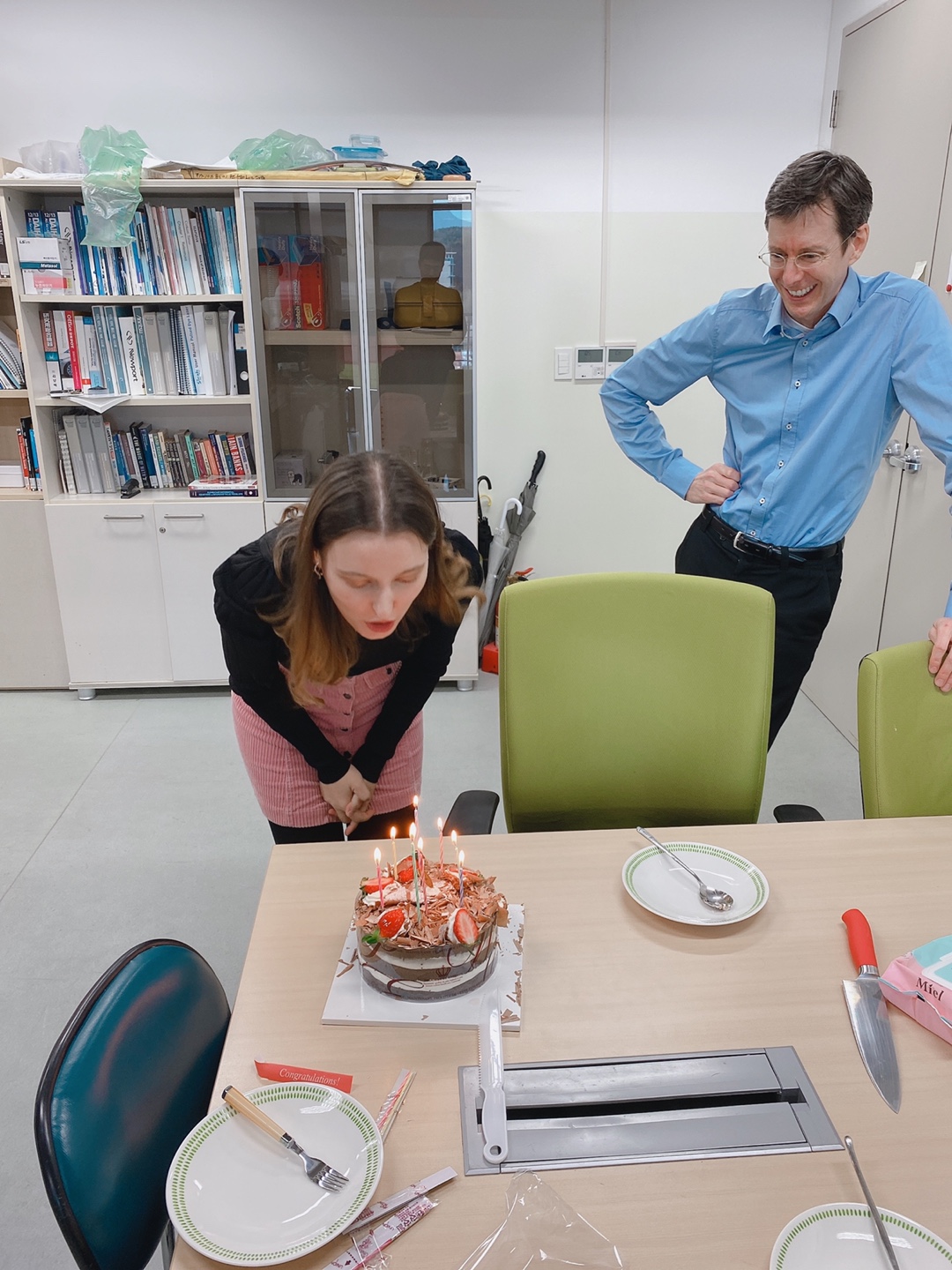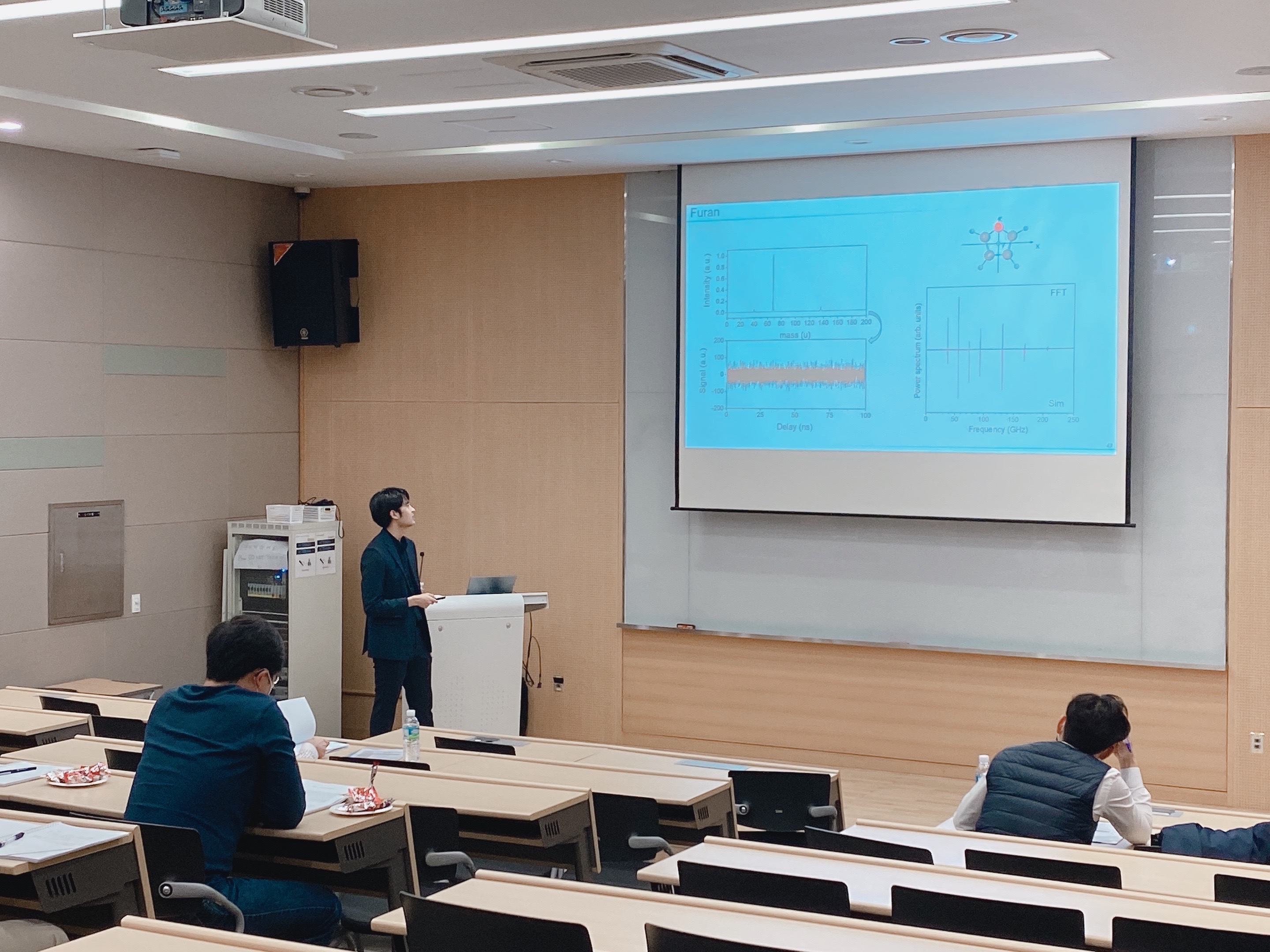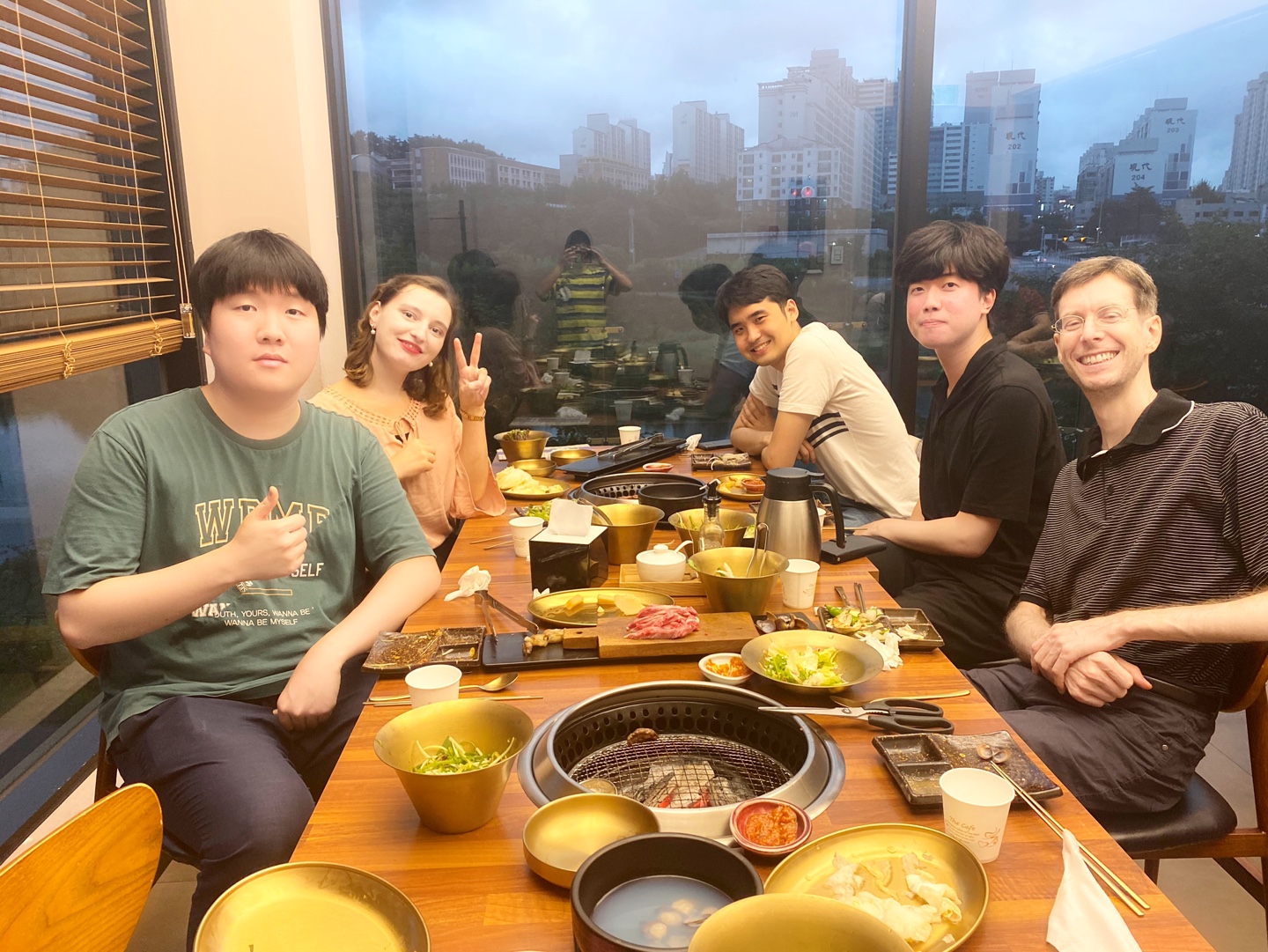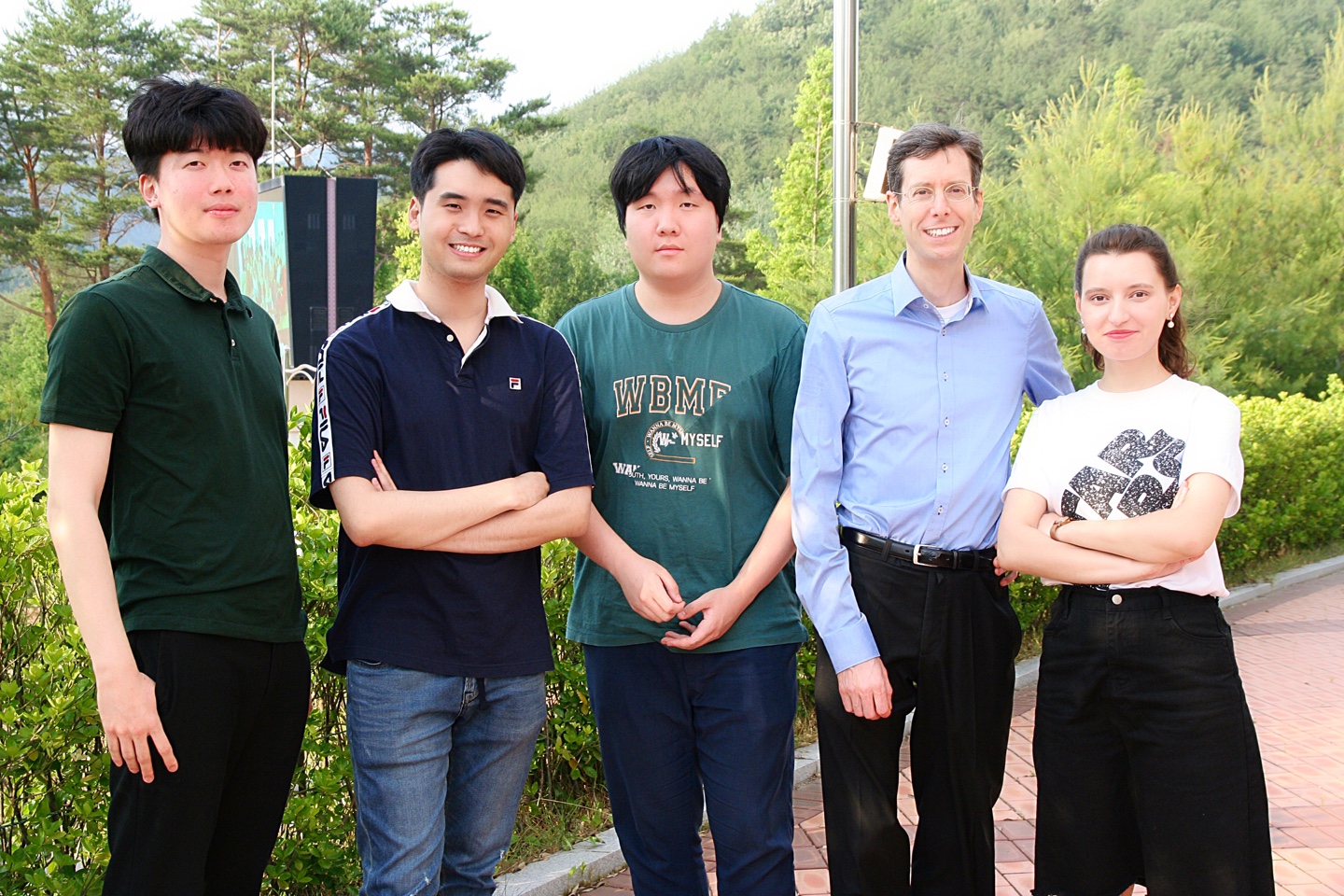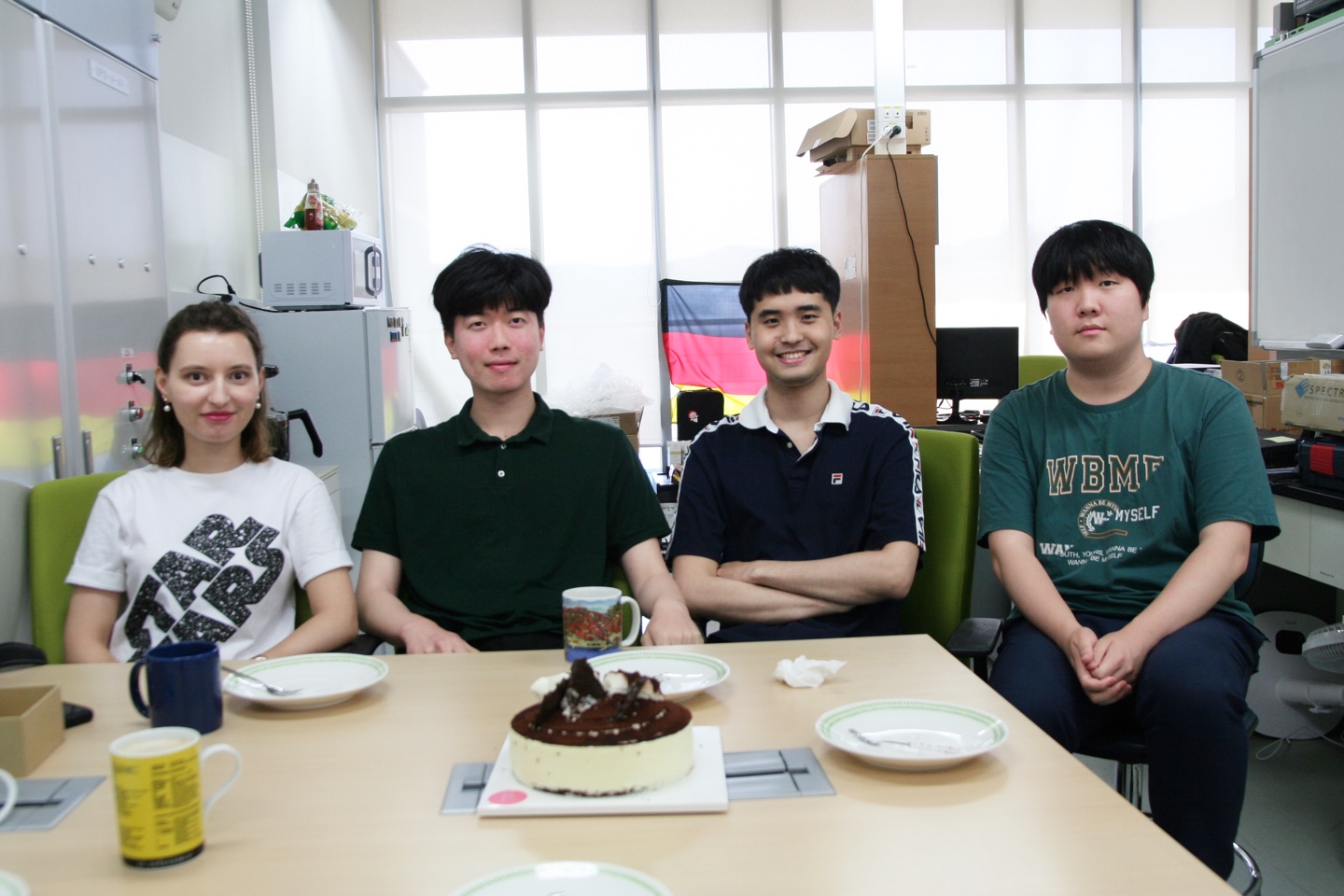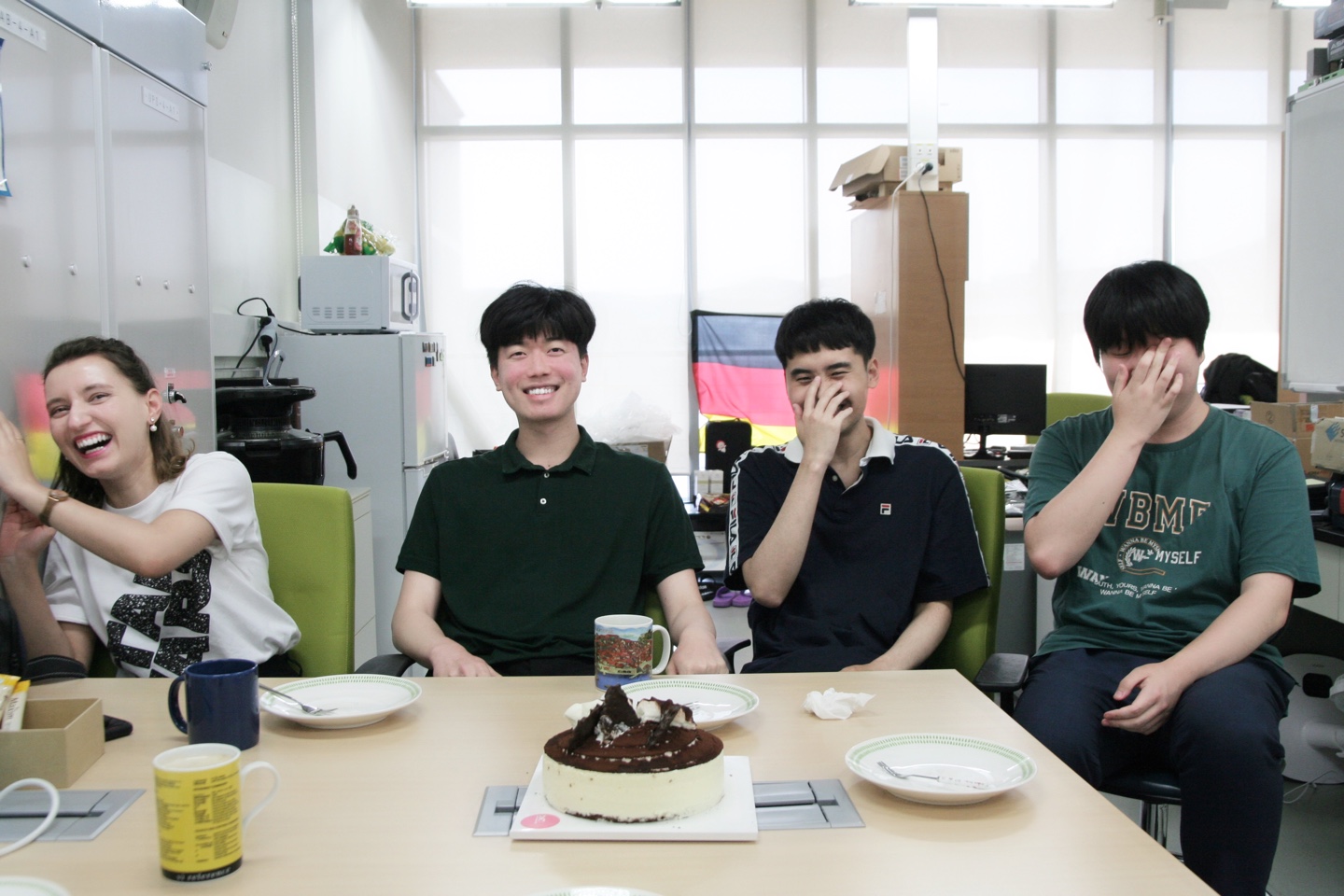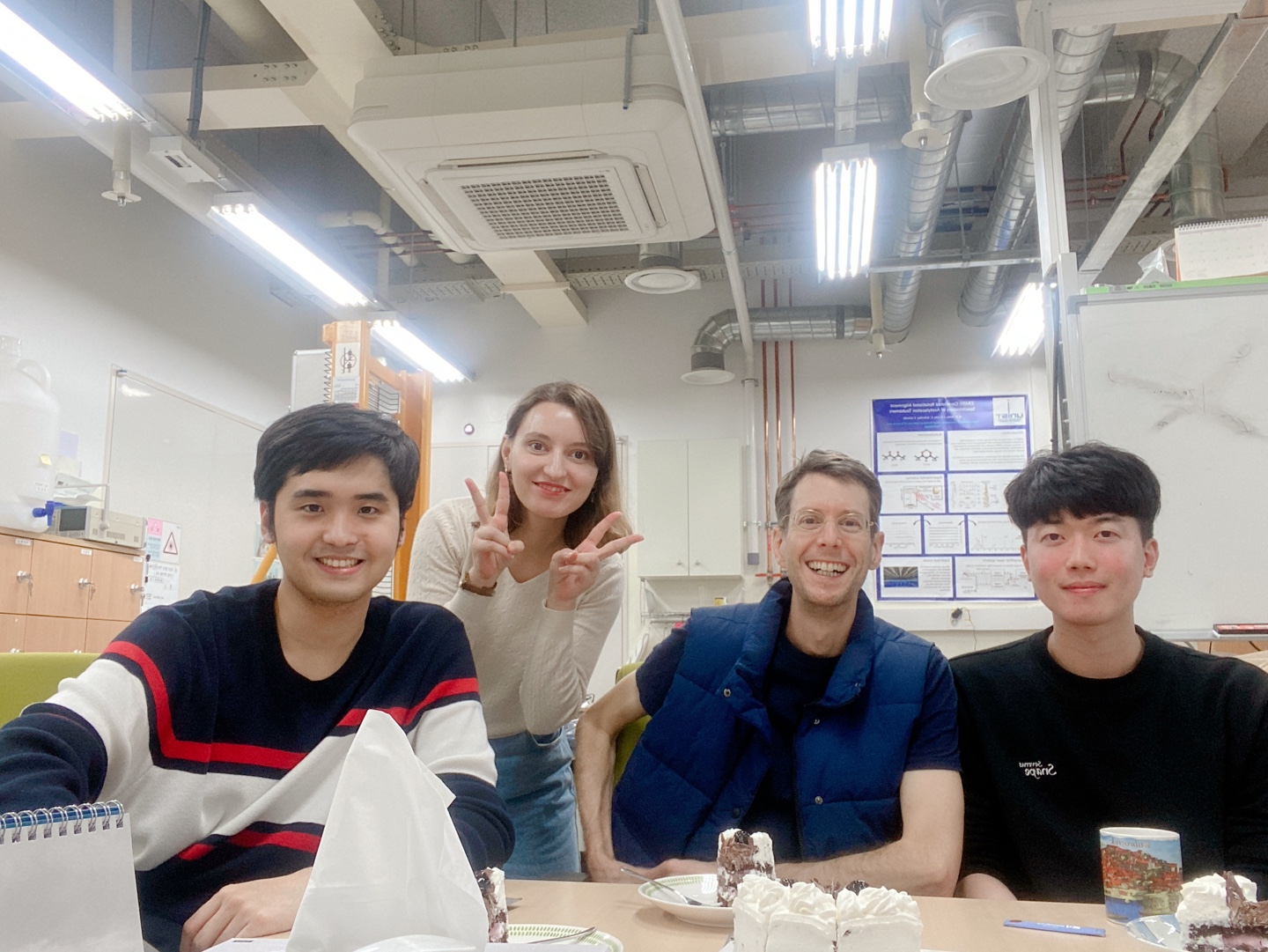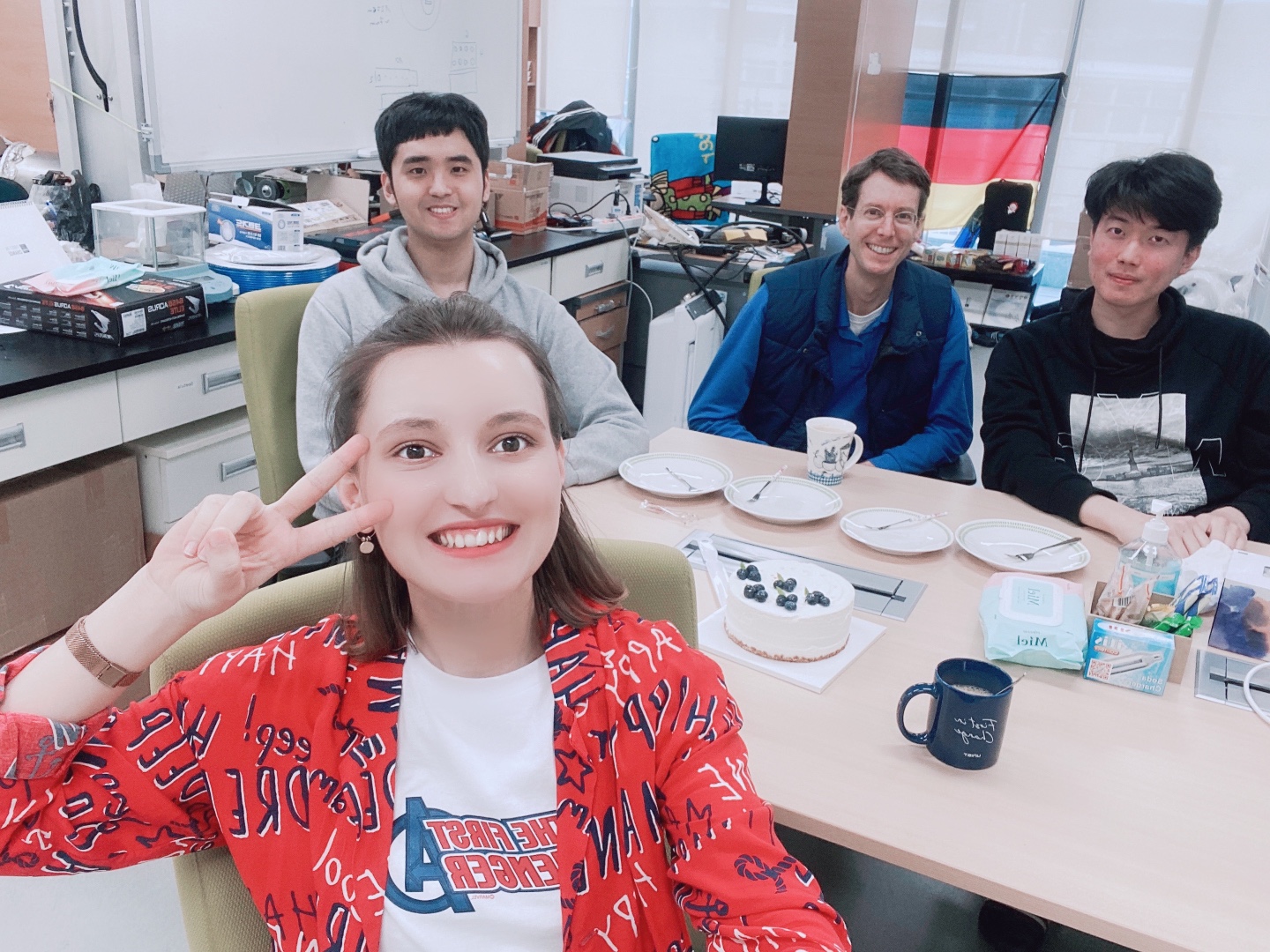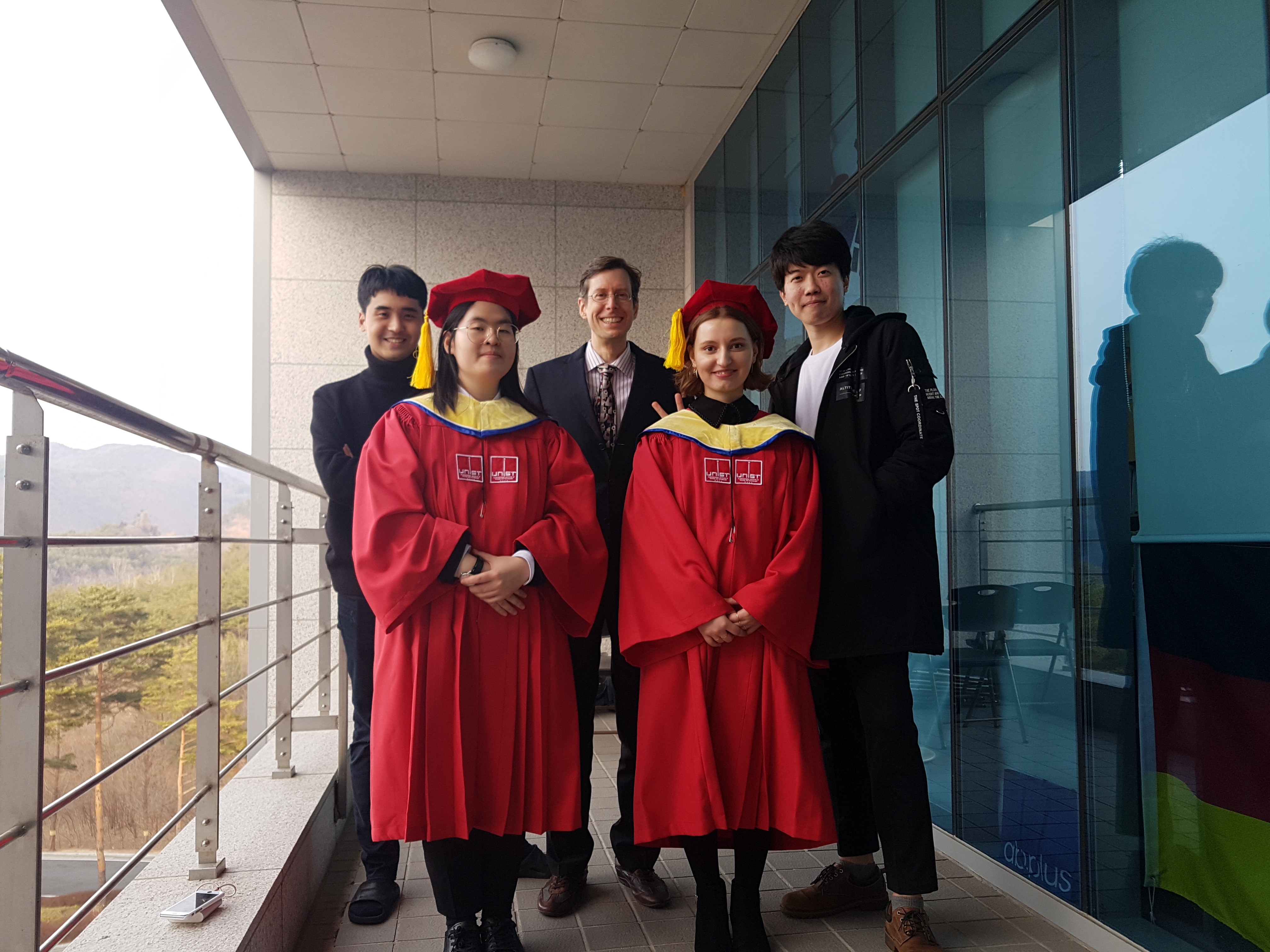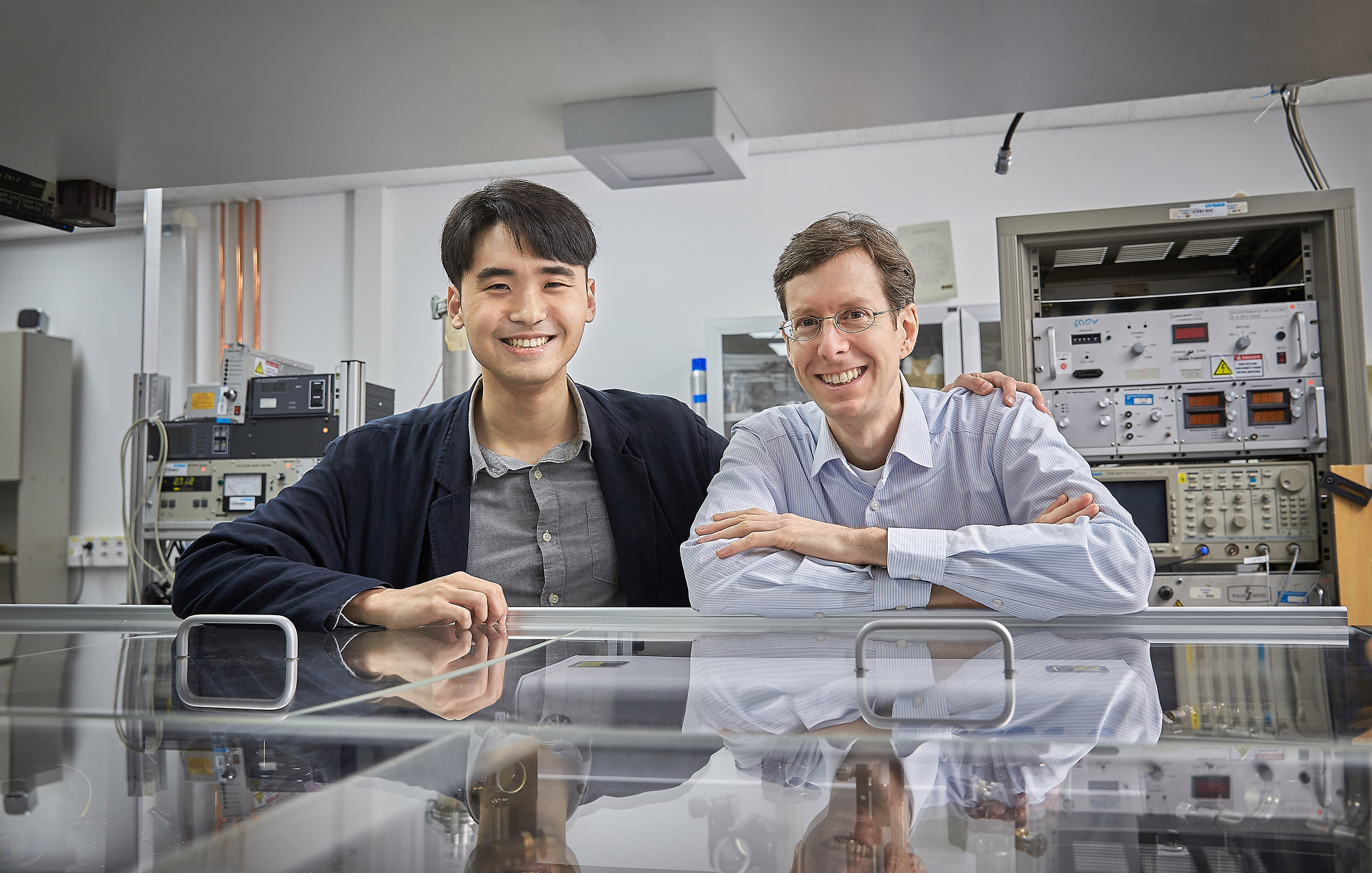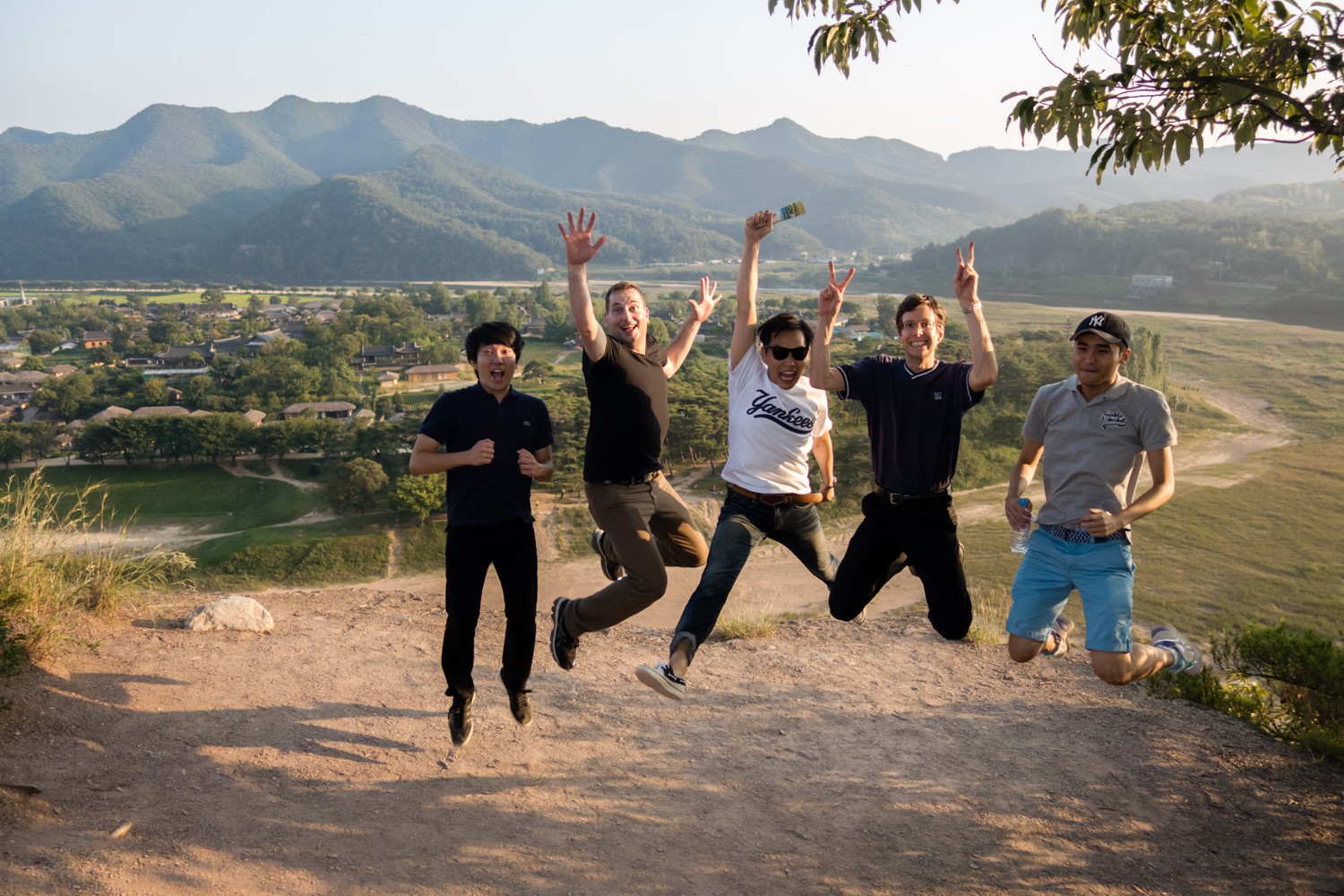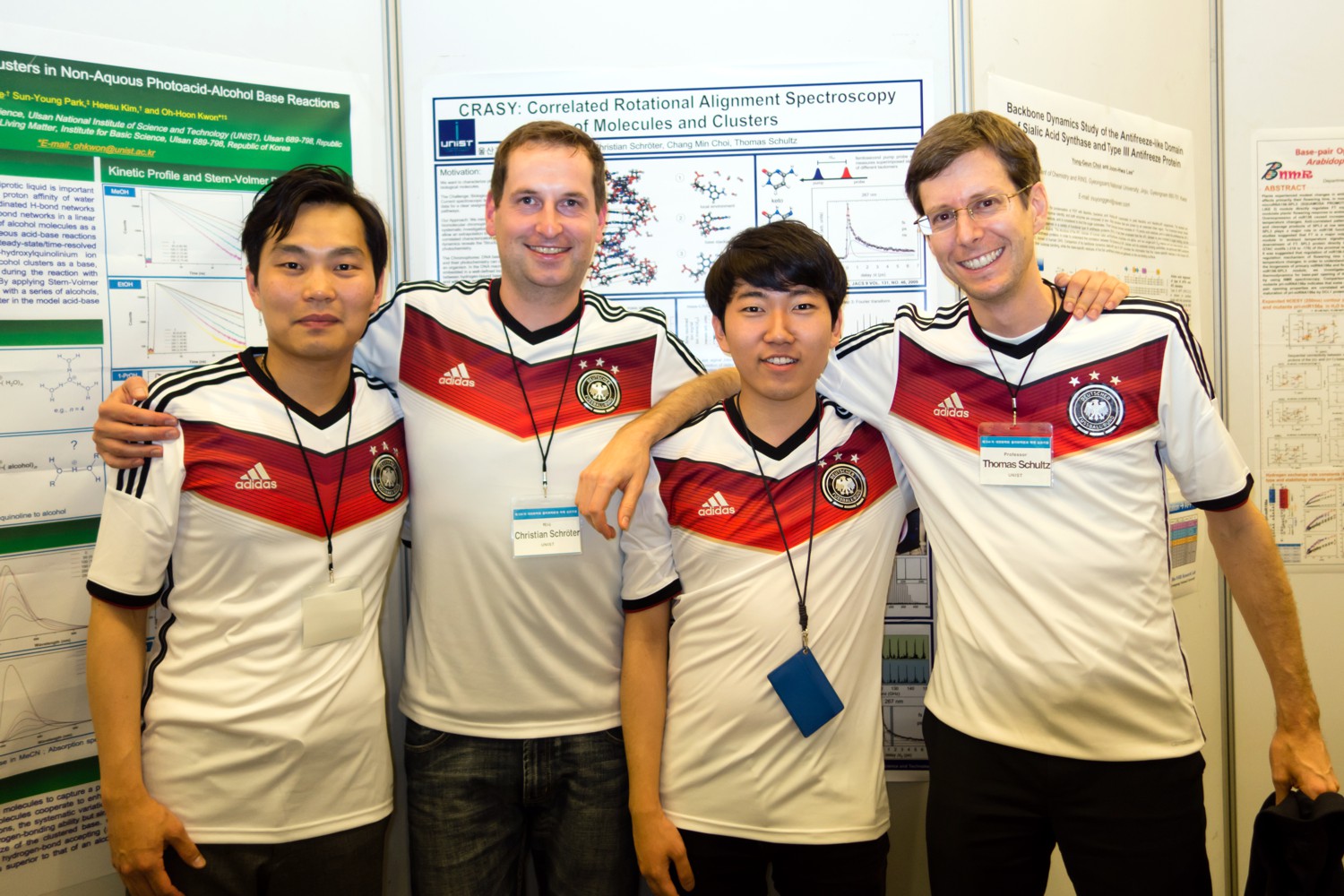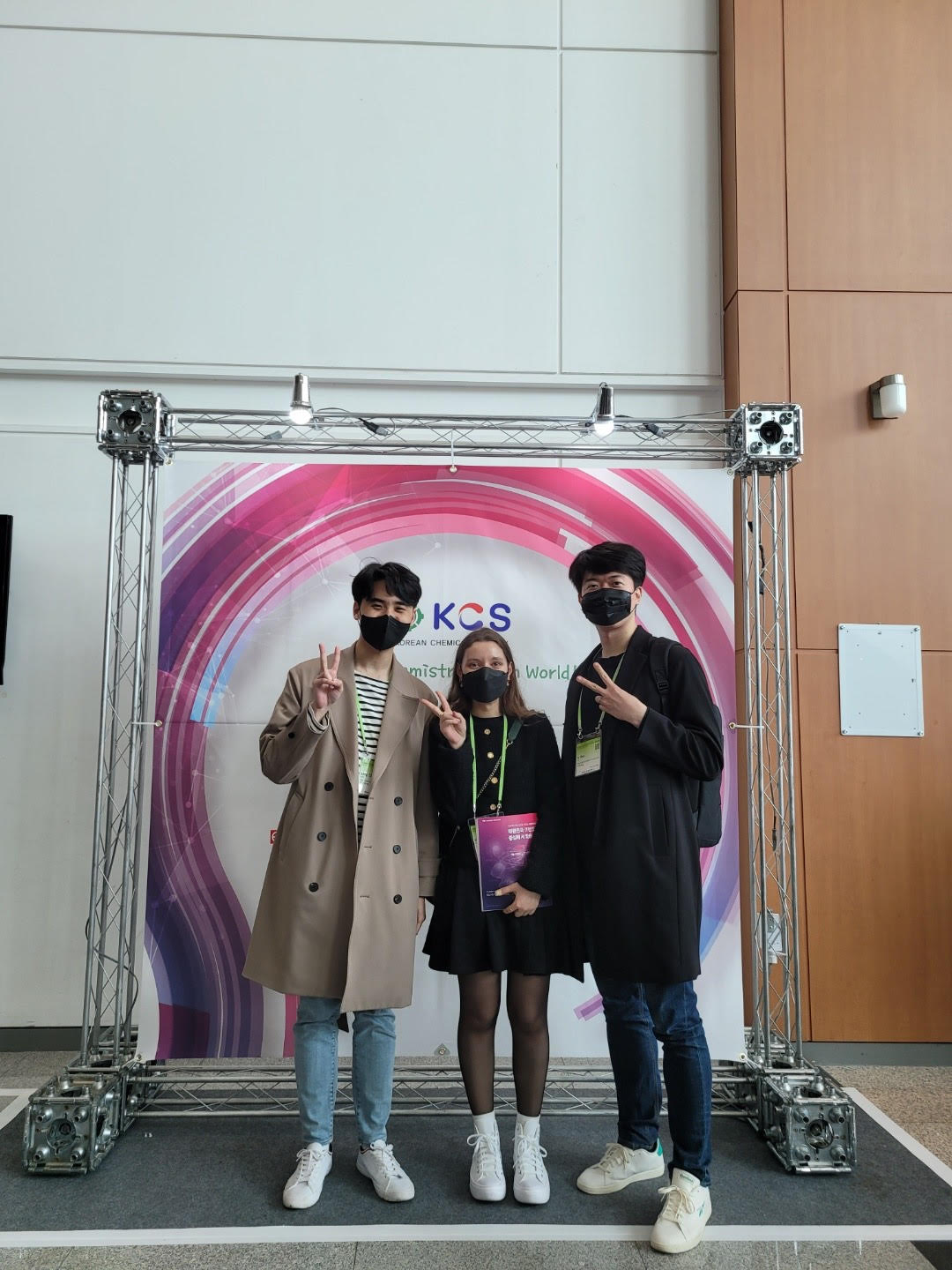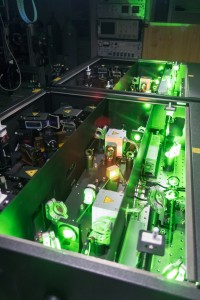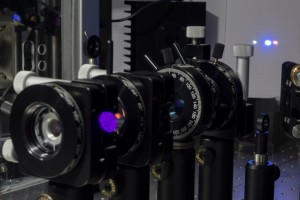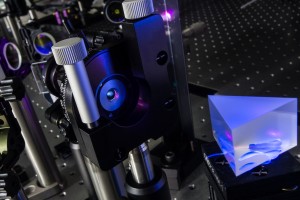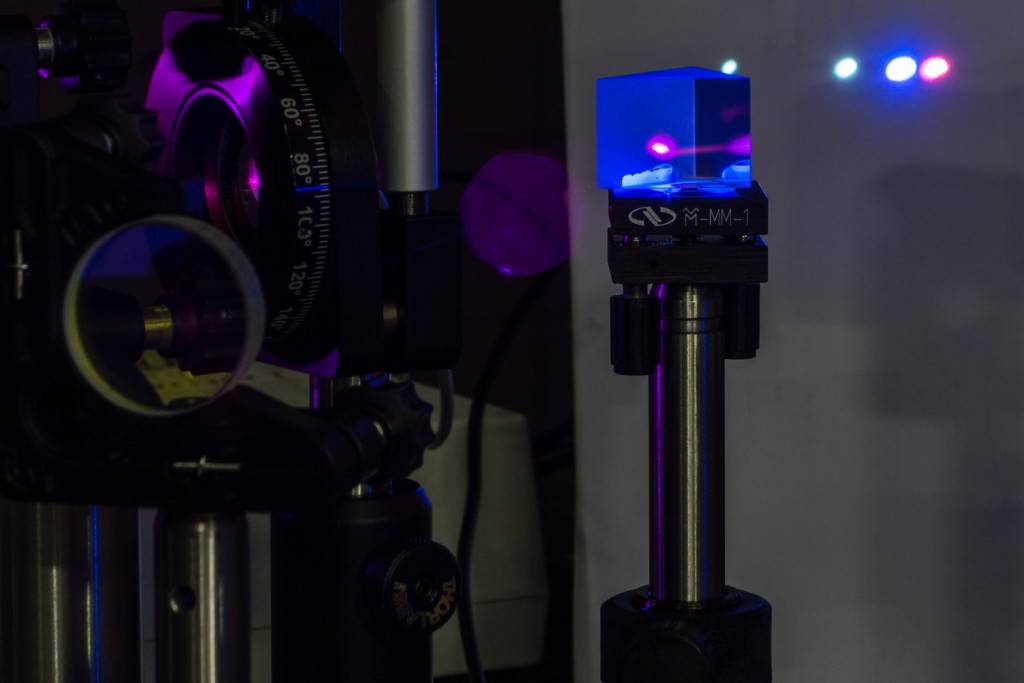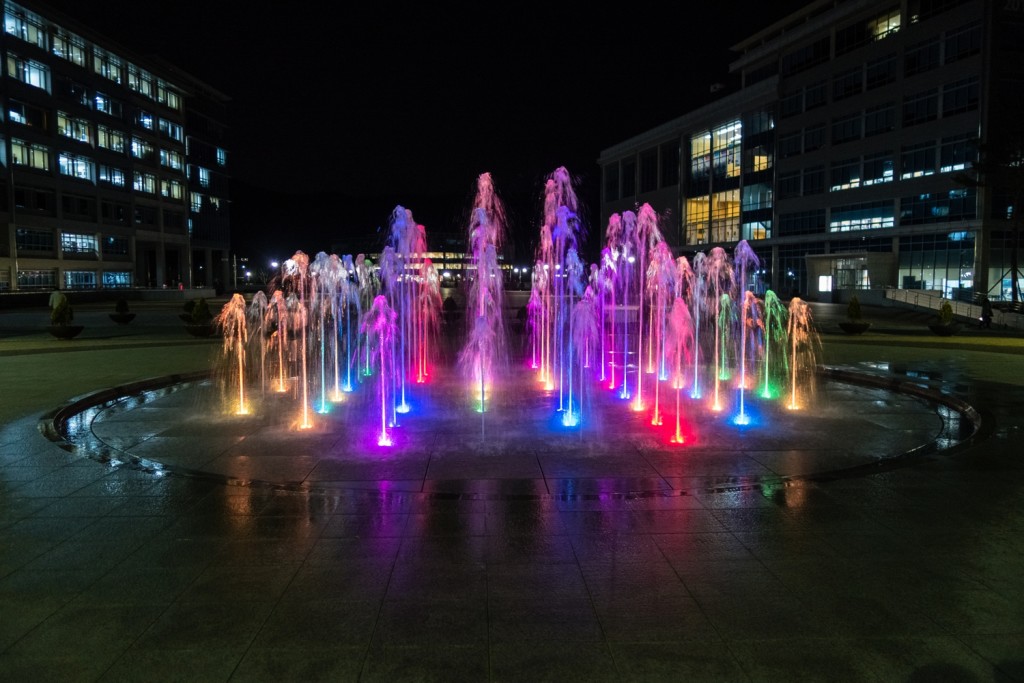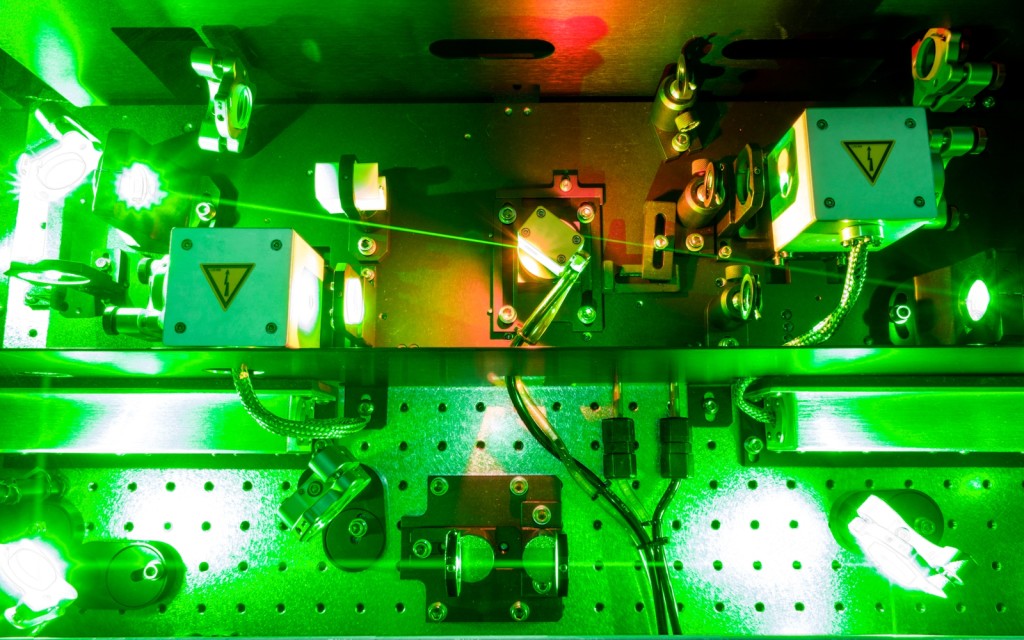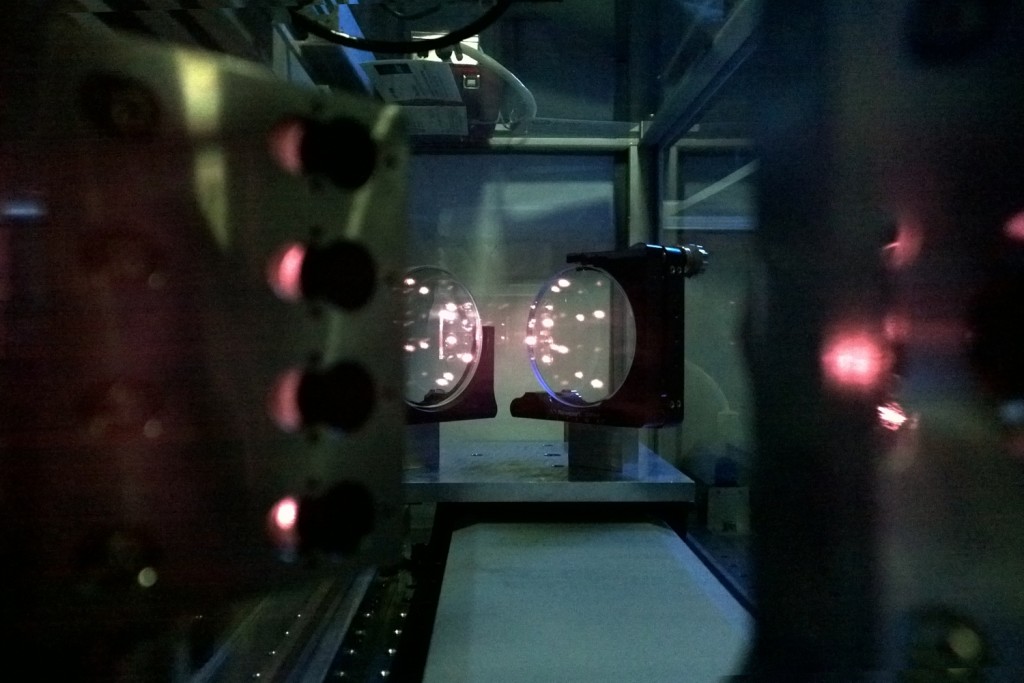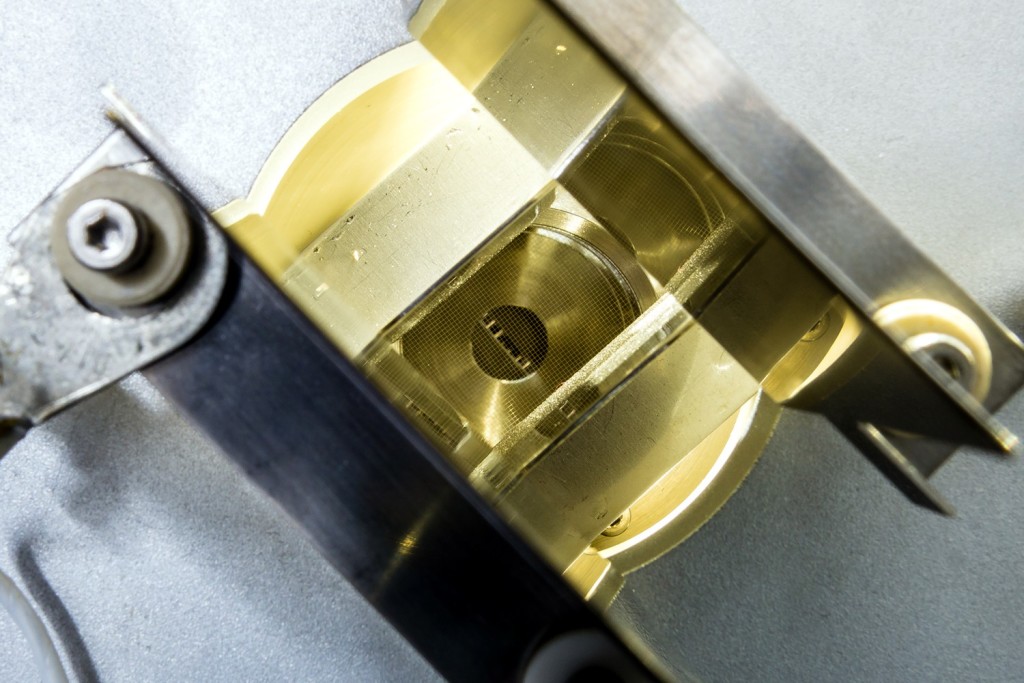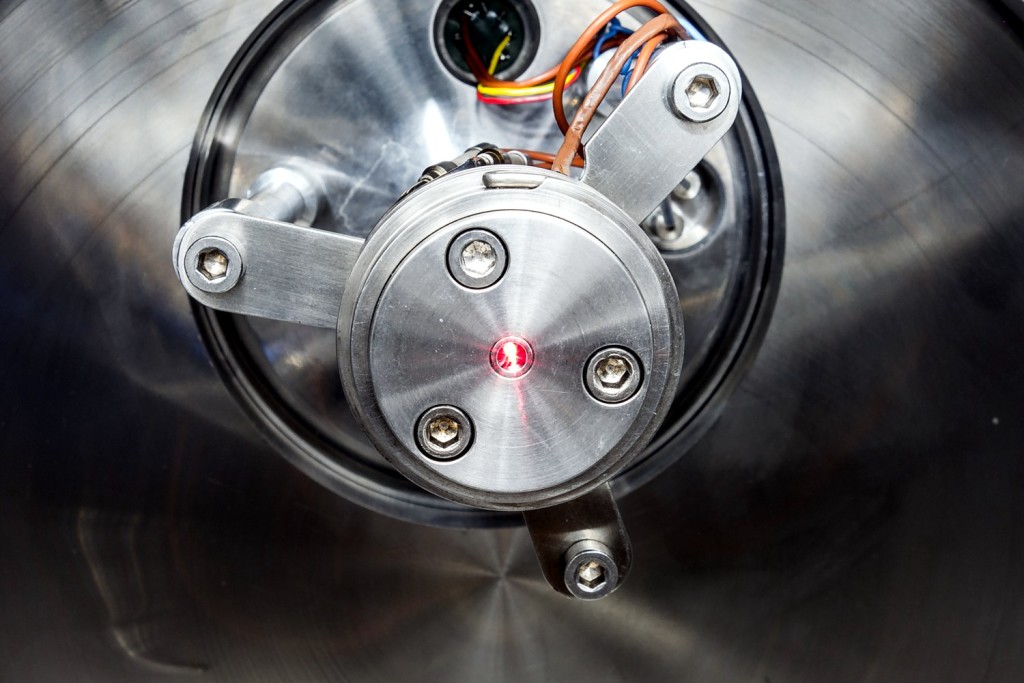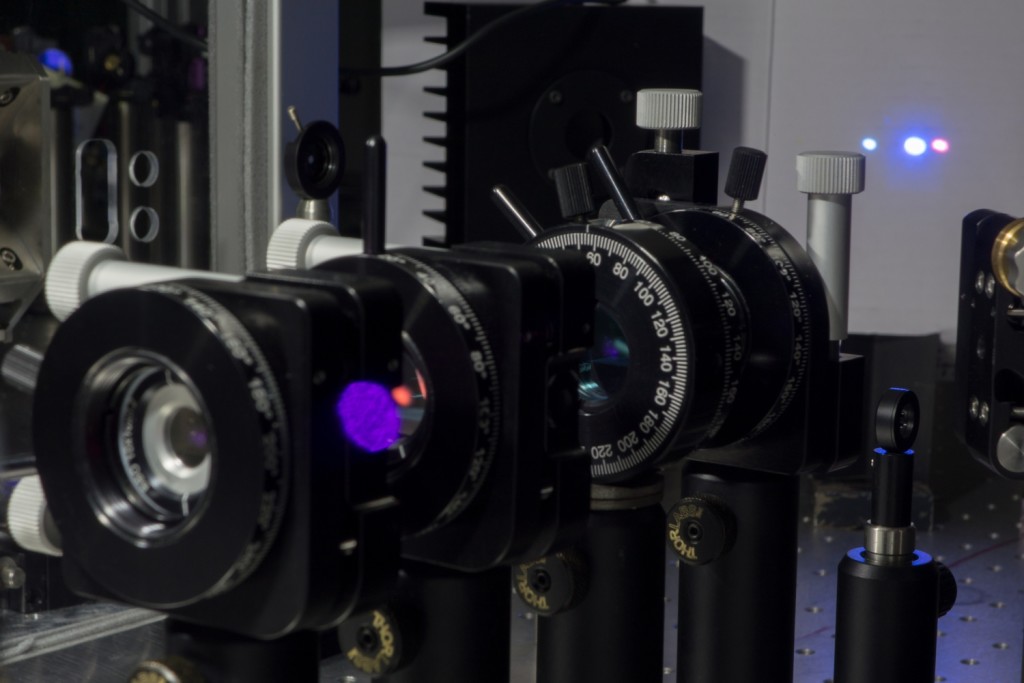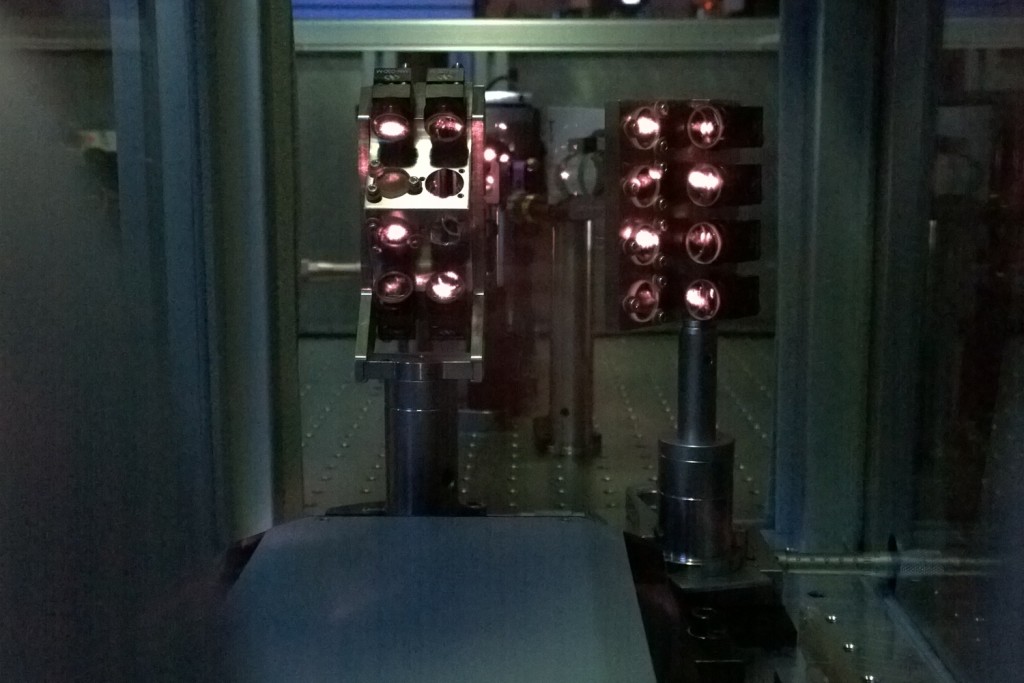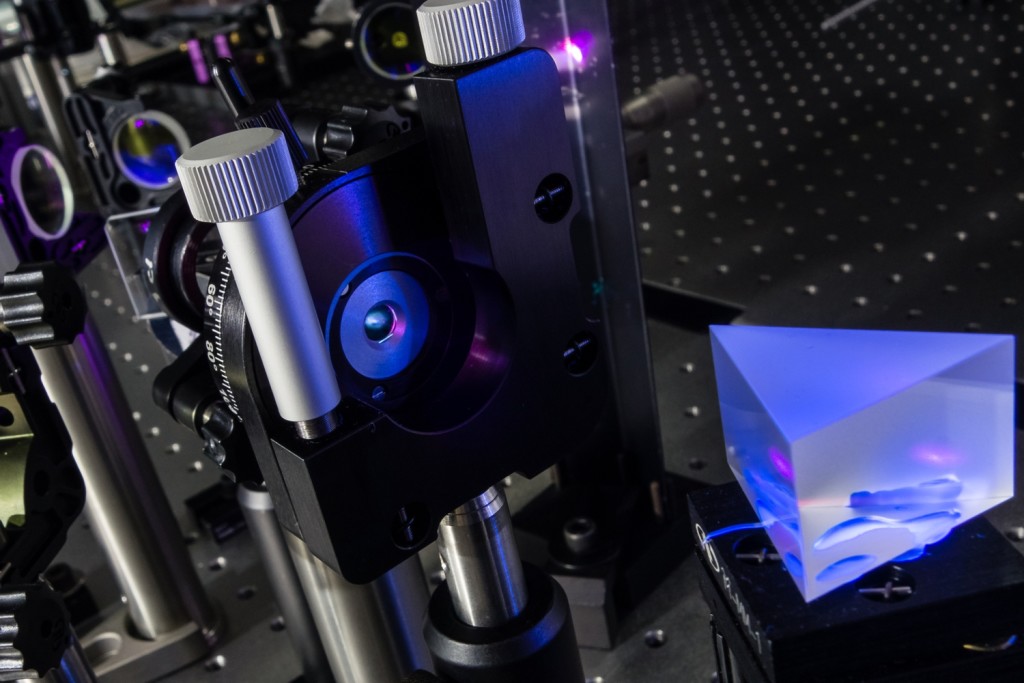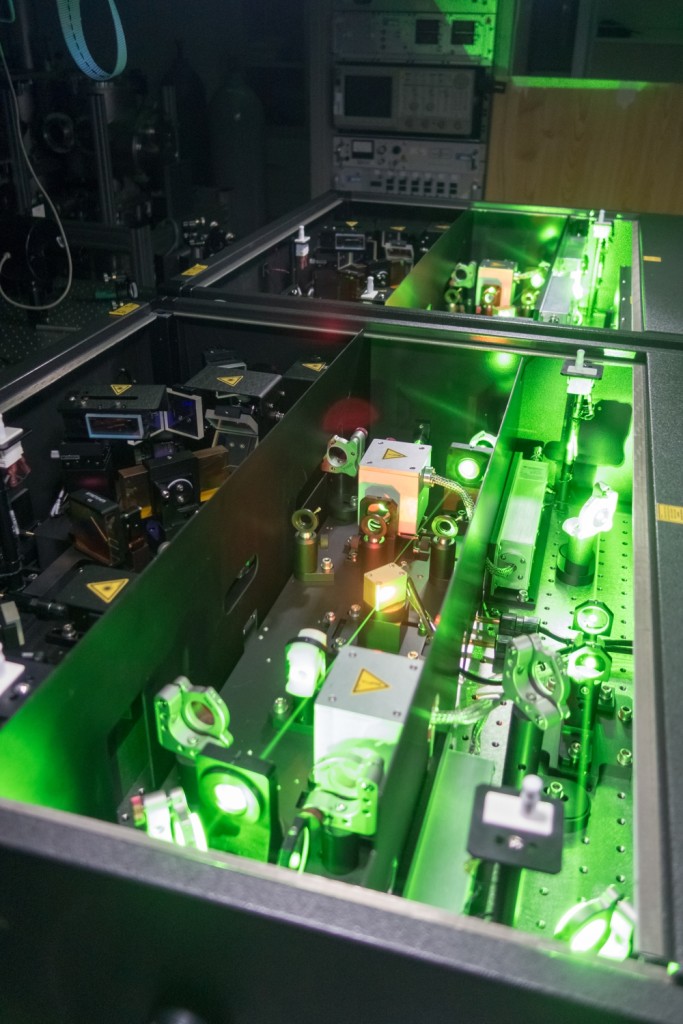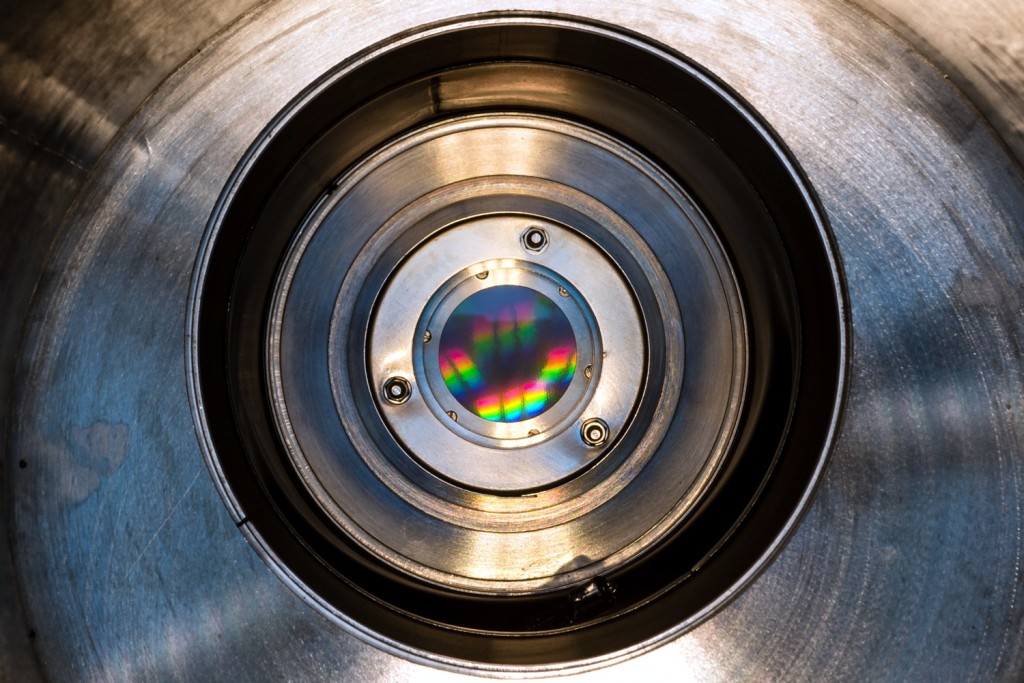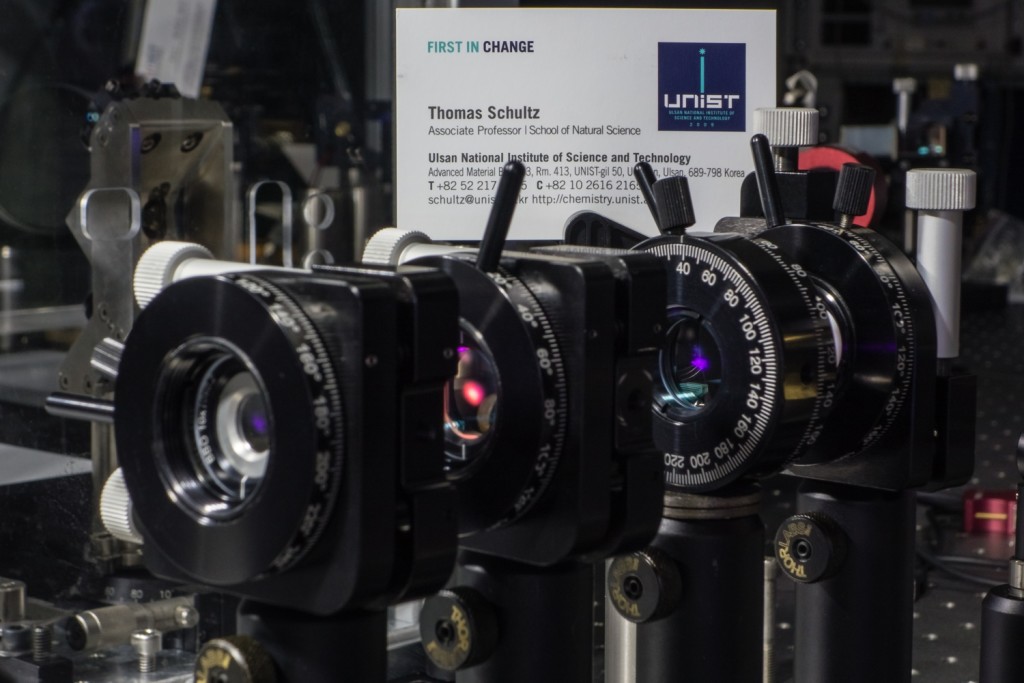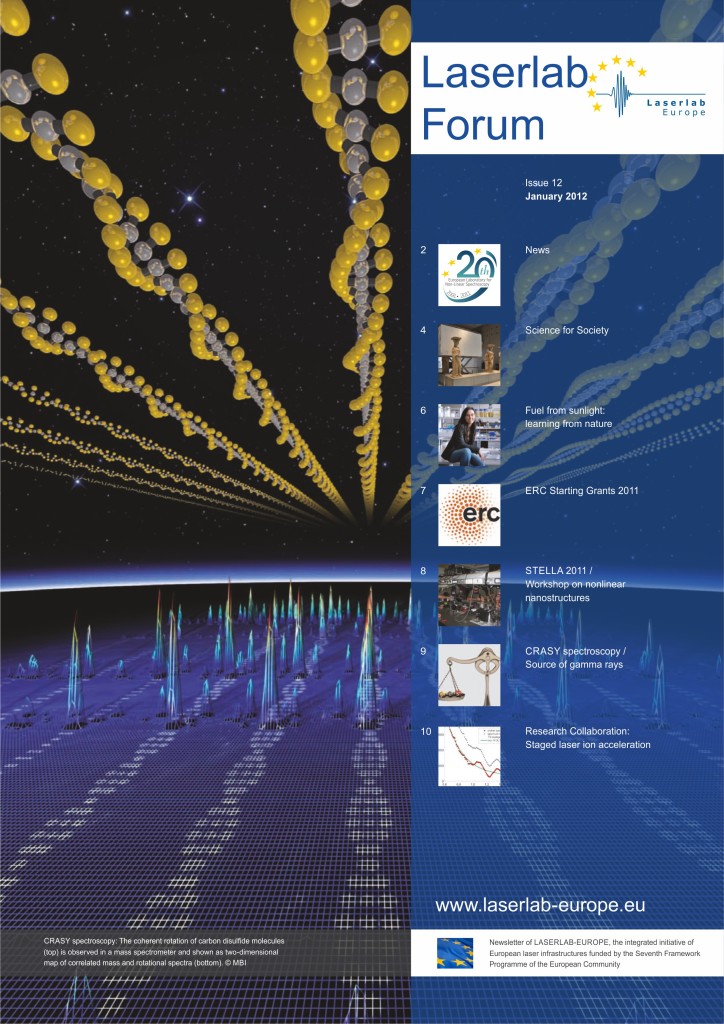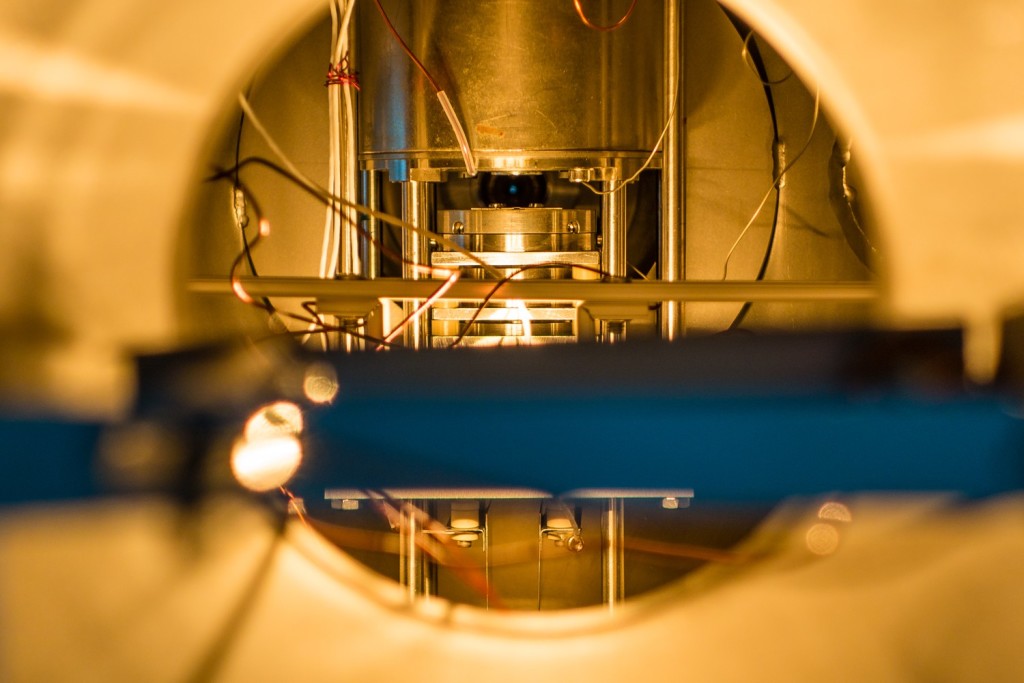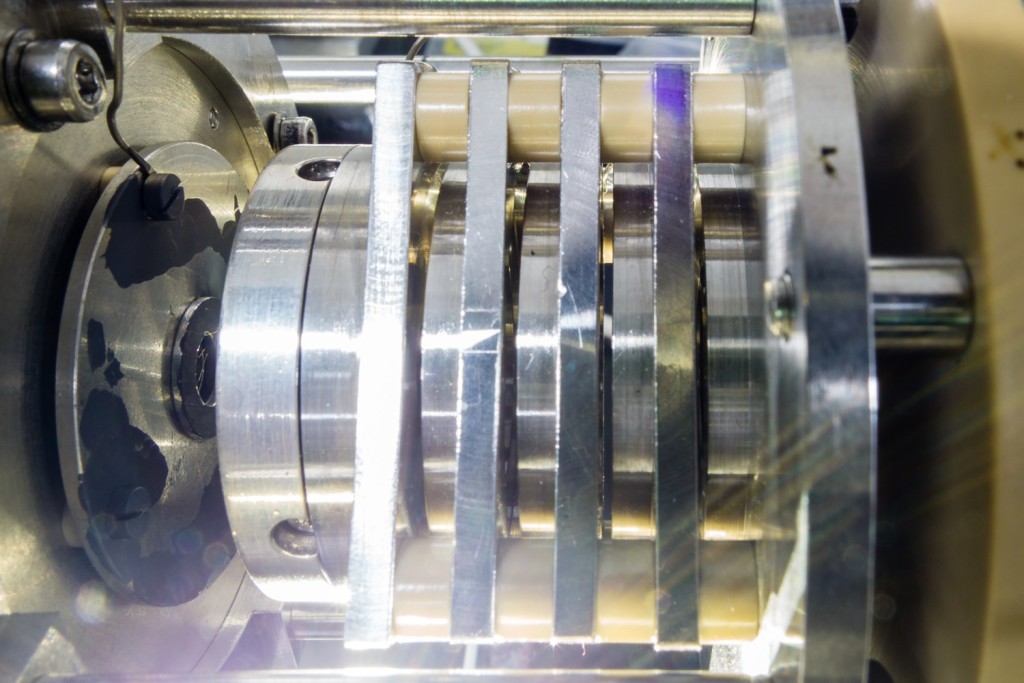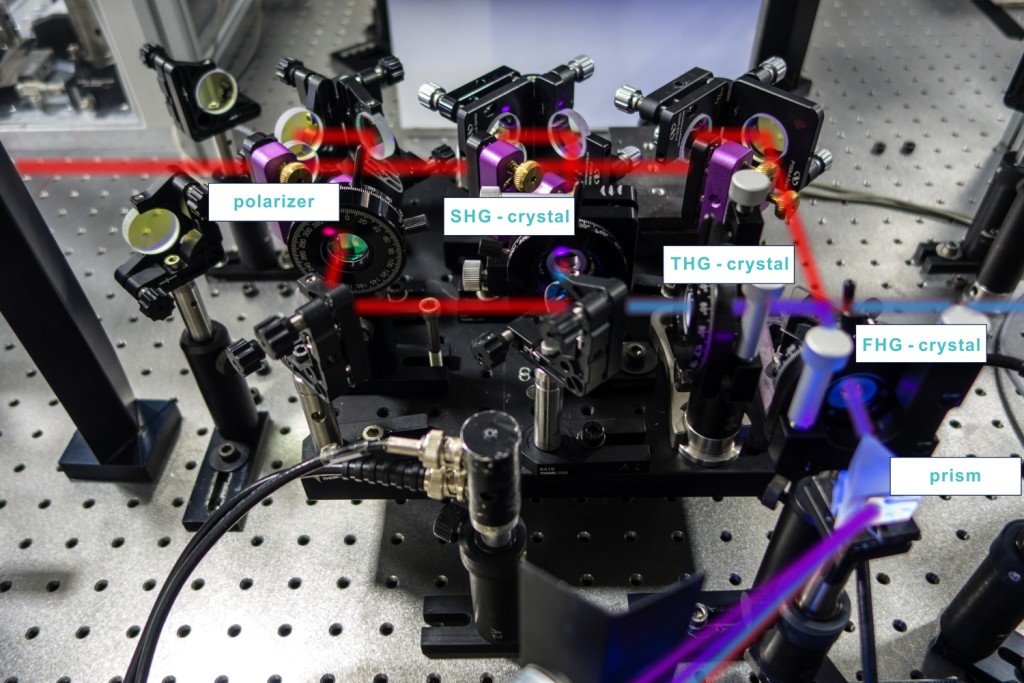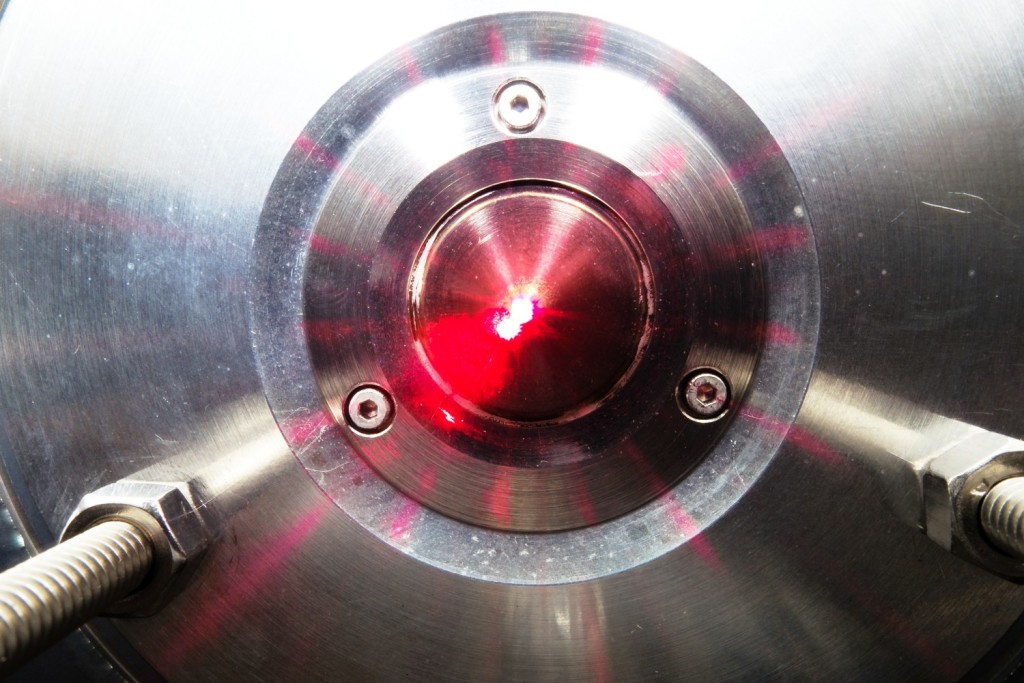The CRASY team started off as part of the devision A2 at the Max-Born-Institute for nonlinear optics and short time spectroscopy in Berlin. At that time, Dr. Thomas Schultz focused his research on the photochemistry of DNA bases and base pair clusters in order to understand the fundamental processes and interactions that lead to the outstanding photostability of DNA. Unfortunatly the information content of experiments using ultra short laser pulses is limited by heisenbergs uncertainty principle. The drawback of a good time resolution Δt is a poor energy resolution ΔE. The increasing structural complexity of the biological systems hardly allows for the assignment of measured data, because of an increasing number of structural isomers. To separate the contributions from different isomers, a good energy resolution is required. Back in his early years at the MBI, Dr. Thomas Schultz came up with the idea of using the coherent rotational motion of an ensemble of molecules to modulate the excitation probabilities and hence the signal intensities measured in standard femtosecond gas phase experiments.
In 2008 Dr. Thomas Schultz convinced Christian Schröter, a former diploma student at the Max-Born-Institute, to start as a Phd candidate on the project. After he joined the group in June 2008, the researchers first continued experiments on the photochemistry of DNA together with Kyriaki Kosma, a postdoctoral fellow which joined the group in August 2008. After successful measurements on the excited state lifetimes of cytosine tautomers, first experiments on the new correlation technique were successfully performed in January 2009.
After the research focus of devision A shifted towards attosecond science, the contract of Kyriaki Kosma was not extended and she left the group in January 2010. In the coming years the group stayed unchanged but laser application laboratories changed frequently since femtosecond laboratories were reconstructed to attosecond facilities. As a result measurements have been performed under difficult experimental conditions before last CRASY experiments have been performed in November 2011. After Christian Schröter finished his Phd in December 2012, his contract at the Max-Born-Institute ended. In the meantime Dr. Thomas Schultz finished his habilitation at the Free University of Berlin. After he received an offer for a position as associate professor at the Ulsan National Institute of Science and Technology (UNIST), the relocation of the CRASY project to Korea has started.
In July 2013 Prof. Dr. Thomas Schultz and Dr. Christian Schröter joined UNIST. Spectrometers and other equipment has been shipped the same month to Korea. 3 months later the equipment arrived. The construction of the lab finished in February 2014. The same month, Dr. Chang Min Choi joined the group as a postdoctoral fellow in order to support setting up the laboratories. After Prof. Dr. Thomas Schultz gave his first lecture at UNIST, two undergraduate students, Kyeonghyeon Nam and Jongchan Lee, joined the group. Dr. Chang Min Choi left for a postdoctoral position to Lyon, France in October 2014, before first experiments could be performed. In September, the new laser system arrived at UNIST. Several issues with the laser system delayed the setting up of beamlines in the laboratory. Since January 2015, the laser is operable and beam lines have been set up. In middle of February, first high resolution data has been measured in the new laboratory. At the moment, the experiments are optimzed to investigate new molecular samples.
This is the current state of the group. In the future, we hope to welcome more motivated students which are not scared investigating a new research field in a young research group with cordial climate. If there are any questions, feel free to contact the members of our group!
